Paul van Yperen's Blog, page 323
December 24, 2016
Merry Christmas!
Gelukkig kerstfeest! Frohe Weihnachten! ¡Feliz Navidad! Joyeux Noël! Buon Natale! Sretan Božić! Καλά Χριστούγεννα! Boldog karácsonyt! Gleðileg jól! Nollaig Shona! Priecīgus Ziemassvētkus! Linksmų Kalėdų! Среќен Божиќ God jul! Wesołych Świąt! Feliz Natal! Crăciun fericit! С Рождеством Срећан Божић veselé Vianoce! Vesel božič! God Jul! Nadolig Llawen! Gëzuar Krishtlindjet! Eguberri! Merry Christmas!

Mireille Darc . Romanian postcard by Casa Filmului Acin, no. 436.
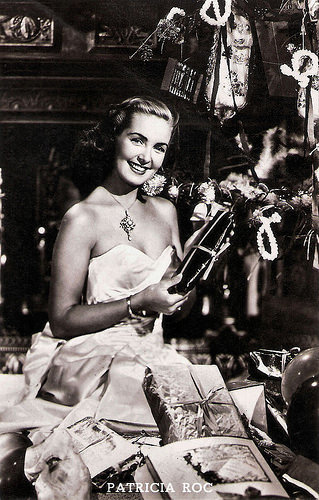
Patricia Roc . Dutch postcard. Photo: British Lion.
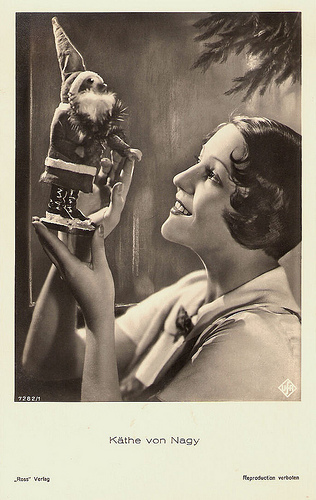
Käthe von Nagy . German postcard by Ross Verlag, no. 7282/1. Photo: Ufa. Released in Italy by Ed. Ballerini & Fratini, Firenze.
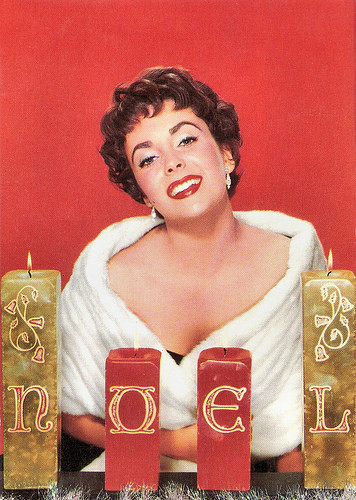
Elizabeth Taylor . French postcard by Editions P.I., Paris, no. 1051. Photo: John Everton / Ufa.
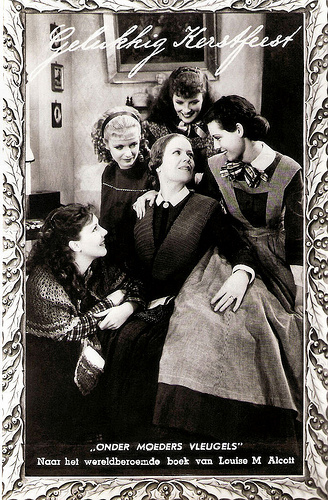
Dutch postcard by the Rialto Theatre, Amsterdam, 1934. Photo: Remaco Radio Picture. Publicity still for Little Women (George Cukor, 1933). In the picture are Katharine Hepburn, Joan Bennett, Frances Dee, Jean Parker and Spring Byington. The Dutch title of the film and the book by Louise M. Alcott is Onder moeders vleugels.
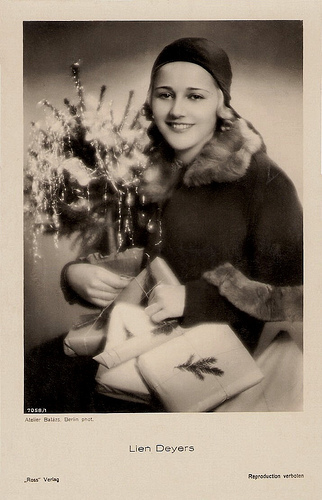
Lien Deyers . German postcard by Ross Verlag, no. 7058/1, 1932-1933. Photo: Atelier Balász, Berlin.
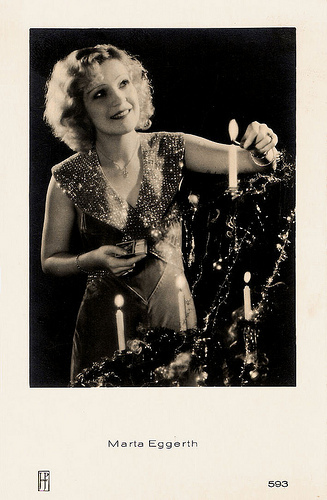
Marta Eggerth . Dutch postcard by JosPe, no. 593.
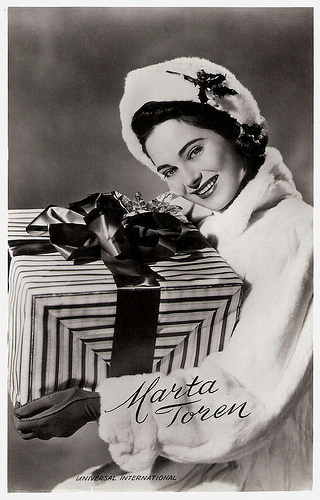
Marta Toren . Dutch postcard, no. 3374. Photo: Universal International / Fotoarchief Film en Toneel.
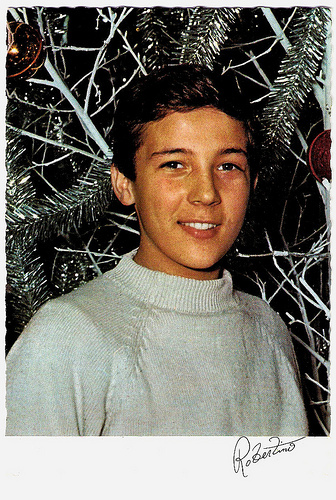
Robertino . French postcard by Editions Publistar, Marseille, no. 811. Photo: President.

Kermit. Dutch postcard by Interstat, Amsterdam. Photo: The Jim Henson Company.
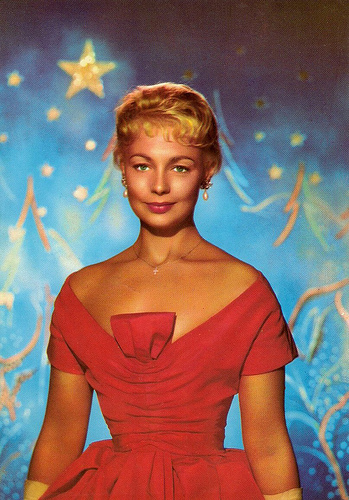
Dany Robin . French postcard by Editions P.I., Paris, no. 1004. Photo: Sam Lévin.
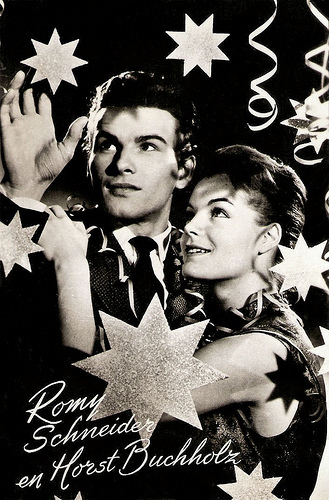
Romy Schneider & Horst Buchholz . Dutch postcard by Uitg. Takken, Utrecht, no. 3572.
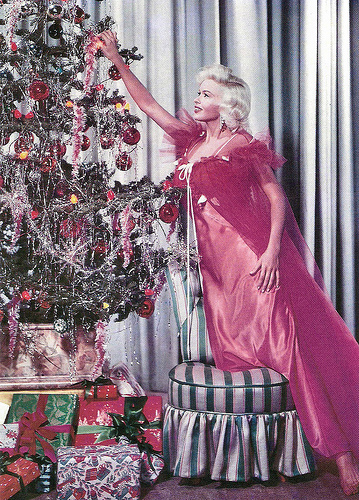
Jayne Mansfield. French postcard by Edition a la carte. Photo: Filmhistorisches Bildarchiv Peter W. Engelmeier.
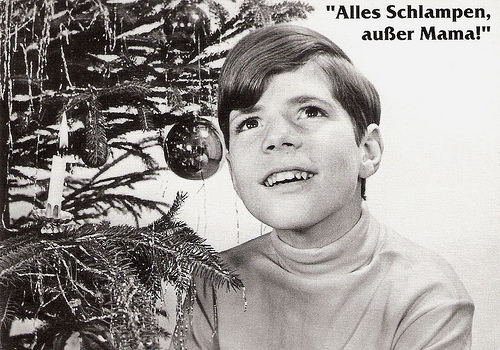
Heintje Simons . German postcard by Modern Times. Photo: Interfoto. Caption: Alles schlampen, ausser mama (All bitches, except mama).
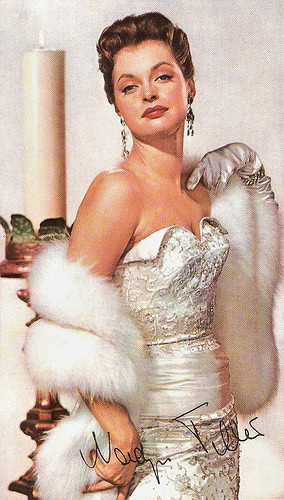
Nadja Tiller . German promotion card for Luxor.

Mireille Darc . Romanian postcard by Casa Filmului Acin, no. 436.

Patricia Roc . Dutch postcard. Photo: British Lion.

Käthe von Nagy . German postcard by Ross Verlag, no. 7282/1. Photo: Ufa. Released in Italy by Ed. Ballerini & Fratini, Firenze.

Elizabeth Taylor . French postcard by Editions P.I., Paris, no. 1051. Photo: John Everton / Ufa.

Dutch postcard by the Rialto Theatre, Amsterdam, 1934. Photo: Remaco Radio Picture. Publicity still for Little Women (George Cukor, 1933). In the picture are Katharine Hepburn, Joan Bennett, Frances Dee, Jean Parker and Spring Byington. The Dutch title of the film and the book by Louise M. Alcott is Onder moeders vleugels.

Lien Deyers . German postcard by Ross Verlag, no. 7058/1, 1932-1933. Photo: Atelier Balász, Berlin.

Marta Eggerth . Dutch postcard by JosPe, no. 593.

Marta Toren . Dutch postcard, no. 3374. Photo: Universal International / Fotoarchief Film en Toneel.

Robertino . French postcard by Editions Publistar, Marseille, no. 811. Photo: President.

Kermit. Dutch postcard by Interstat, Amsterdam. Photo: The Jim Henson Company.

Dany Robin . French postcard by Editions P.I., Paris, no. 1004. Photo: Sam Lévin.

Romy Schneider & Horst Buchholz . Dutch postcard by Uitg. Takken, Utrecht, no. 3572.

Jayne Mansfield. French postcard by Edition a la carte. Photo: Filmhistorisches Bildarchiv Peter W. Engelmeier.

Heintje Simons . German postcard by Modern Times. Photo: Interfoto. Caption: Alles schlampen, ausser mama (All bitches, except mama).

Nadja Tiller . German promotion card for Luxor.
Published on December 24, 2016 22:00
December 23, 2016
Imported from the USA: Grace Kelly
American actress Grace Kelly (1929-1982) had a brief but very successful Hollywood career. She was the sparkling, elegant heroin in three classic Alfred Hitchcock thrillers. Her talents rivalled her beauty, winning her a Best Actress Oscar for The Country Girl in 1954. Then Europe imported her. After marrying Prince Rainier III in April 1956, she became Princess of Monaco and retired from the cinema.
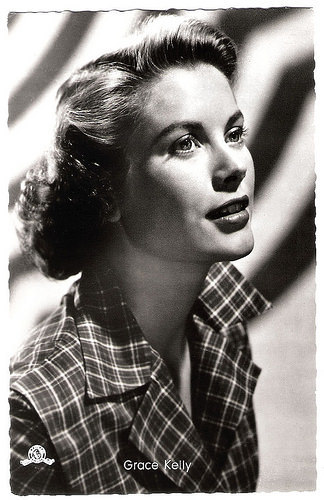
German postcard by Kolibri-Verlag G.m.b.H., Minden Westf., no. 1878. Photo: Metro-Goldwyn-Mayer. Publicity still for Mogambo (John Ford, 1953).
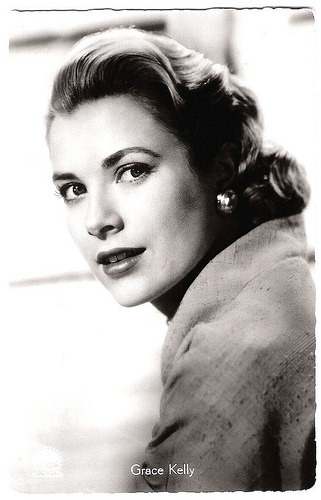
German postcard by Kolibri-Verlag G.m.b.H., Minden Westf., no. 1878. Photo: Paramount. Publicity still for Rear Window (Alfred Hitchcock, 1954).
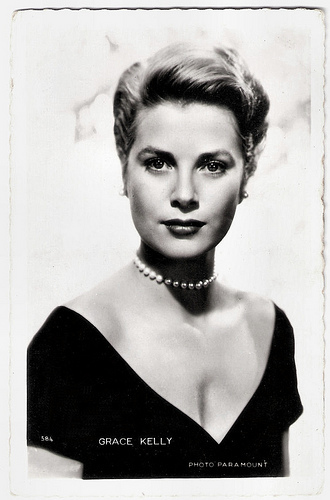
French postcard by Editions P.I., Paris, no. 584, Photo: Paramount, 1954.
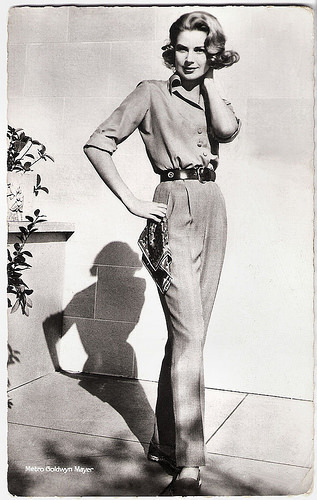
French postcard by Editions du Globe, no. 498, Photo: Virgil Apger / Metro Goldwyn Mayer. Key-set portrait from High Society (Charles Walters, 1956).
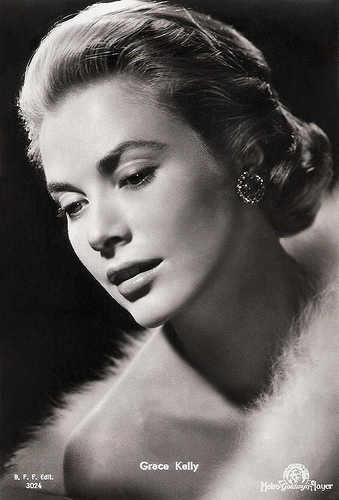
Italian postcard by B.F.F. Edit. (Ballerini & Fratini, Firenze), no. 3024. Photo: Metro-Goldwyn-Mayer.
Breeding, quality and class
Grace Patricia Kelly was born in 1929 in Philadelphia, Pennsylvania. She was the daughter of Margaret Katherine Majer, who had taught physical education at the University of Pennsylvania, and John Brendan Kelly, Sr., who owned a successful brickwork contracting company and was a three-time Olympic Gold winner for rowing. Her uncle was Pulitzer Prize-winning playwright George Kelly.
At an early age, Grace decided to become an actress. After her high school graduation in 1947, she struck out on her own, heading to New York. Despite her parents' disapproval, she attended and graduated from the American Academy of Dramatic Arts. She worked as a model and in 1949, she made her Broadway debut in a revival of August Strindberg's The Father alongside Raymond Massey.
At 19, her graduation performance was as Tracy Lord in The Philadelphia Story. Grace also made a foray into the infant medium of television and appeared in 60 live drama productions between 1950 and 1953. Her success on television brought her to the attention of Hollywood.
Her first film was Fourteen Hours (Henry Hathaway, 1951) when she was 22. It was a small part, but a start nonetheless. The following year, she landed the role of Amy Kane in the now-classic Western High Noon (Fred Zinnemann, 1952), opposite starring Gary Cooper. The film turned out to be very popular. Curiously, however, she did not benefit from the film's success, and no other offers were immediately forthcoming.
In 1953, Grace appeared in only one film, the popular jungle drama Mogambo (John Ford, 1953). She played Linda Nordley next to Clark Gable and Ava Gardner . Director John Ford said that she showed "breeding, quality and class." Her role won her a Golden Globe Award and an Academy Award nomination for Best Supporting Actress in 1954. Grace signed a seven-year contract with MGM.
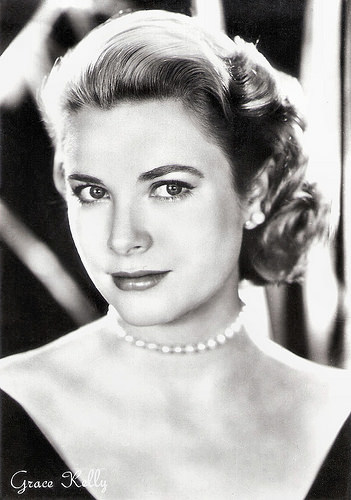
Italian postcard by Rotalfoto, Milano, no. 552.
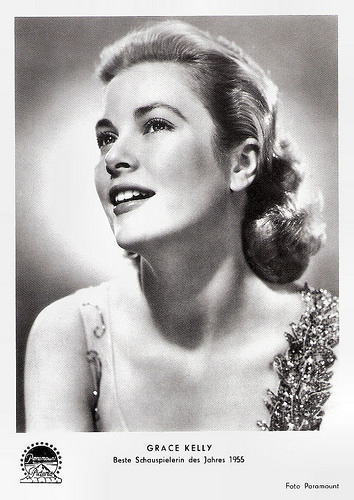
Modern German postcard by K & B / Filmwelt Berlin Archiv für Film-Geschichte, no. KB 55. Photo: Paramount. Publicity still for To Catch a Thief (Alfred Hitchcock, 1955). Caption: Best Actress of the Year 1955.

Yugoslavian postcard by Yugoturist, Beograd / Studio Sombor, no. 183.
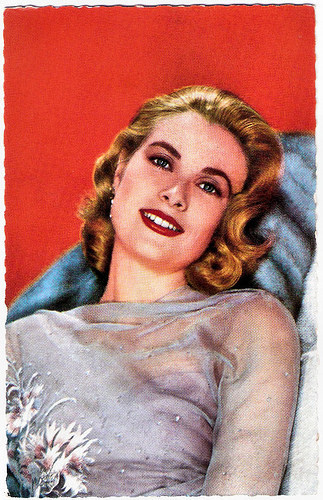
West-German postcard by Kolibri-Verlag G.m.b.H., Minden (Westf.), no. F 38. Photo: Metro-Goldwyn-Mayer (MGM). Publicity still for High Society (Charles Walters, 1956).
Hitchcock's perfect blonde
It was master director Alfred Hitchcock who turned Grace Kelly into a major star. She was the perfect blonde he had been seeking throughout his career. Her first film for him was Dial M for Murder (Alfred Hitchcock, 1954), the screen adaptation of Frederick Knott's Broadway hit.
Then followed her standout performance as elegant socialite Lisa Fremont in the brilliant Rear Window (Alfred Hitchcock, 1954). She was cast opposite James Stewart, who played a photographer who witnesses a murder in an apartment across the courtyard while convalescing in a wheelchair. TCM : “The dazzlingly designed Hitchcock classic would be a showcase of Kelly's beauty and her true personality.”
In 1954 Kelly appeared in five films. She won the Academy Award for Best Actress for her portrayal of Georgie Elgin, the wife of a washed-up crooner (Bing Crosby) in The Country Girl (George Seaton, 1954) a film version of Clifford Odets' Broadway hit. William Holden played a director of a Broadway play, who falls for Kelly's character after casting her depressed and alcoholic husband, - an uncomfortable love triangle that mirrored real life. Reportedly Kelly had affairs with both Holden and Crosby.
In 1955, Grace teamed for the third and final time with Hitchcock on To Catch a Thief (Alfred Hitchcock, 1955), co-starring Cary Grant. Hal Erickson at AllMovie : “To Catch a Thief is actually as enjoyable and engaging now as it was 40 years ago. Though the Riviera location photography is pleasing, our favorite scene takes place in a Paramount Studios mockup of a luxury hotel suite, where Grant and Kelly make love while a fireworks display orgasmically erupts outside their window.”
In 1956, she again played Tracy Lord, now in the musical comedy High Society (Charles Walters, 1956), based on the Oscar winning comedy The Philadelphia Story (George Cukor, 1940). The whimsical tale ended with her re-marrying her former husband, played by Bing Crosby. The film was a hit but turned out to be her final acting performance.

Dutch postcard by Uitg. Takken, no. 3015. Photo: MGM. Publicity still for High Society (Charles Walters, 1956) with Bing Crosby.
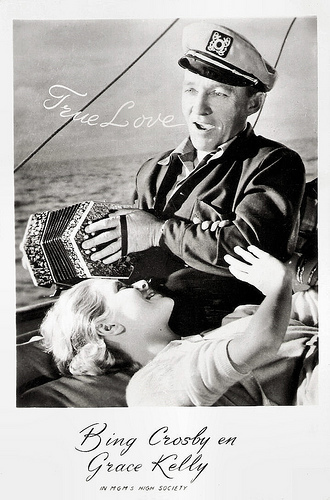
Dutch postcard by Uitg. Takken, Utrecht, no. 3021. Photo: Metro Goldwyn Mayer. Publicity still for High Society (Charles Walters, 1956) with Bing Crosby.
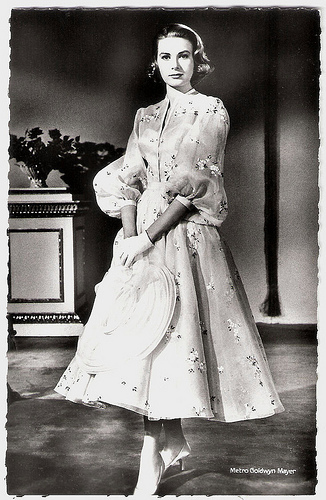
French postcard by Editions du Globe, Paris, no. 496. Photo: Metro Goldwyn Mayer. Publicity still for High Society (Charles Walters, 1956).
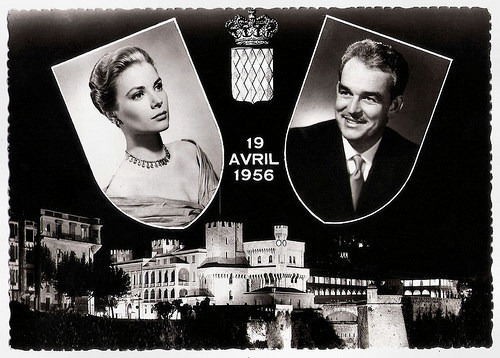
19 April 1956; the wedding with Prince Rainier of Monaco. Monegasque postcard by S.A.P.I., Monaco. Photos: Harcourt and Picédi.
A lavish wedding watched by 30 million viewers
In 1955, Grace Kelly had met Prince Rainier III of Monaco during the Cannes Film Festival. She broke off her affair with fashion designer Oleg Cassini to marry the Prince.
News of the engagement was a sensation. The lavish wedding in 1956 was estimated to have been watched by over 30 million viewers on live television.
Grace and Rainier had three children: Princess Caroline of Monaco (1957), Prince Albert of Monaco (1958) and Princess Stéphanie of Monaco (1965).
Reportedly, Grace hoped to return to acting in Alfred Hitchcock's Marnie (1964), but Monaco's citizens were outraged about the idea of their princess playing a kleptomaniac and kissing Sean Connery . So, Marnie premiered in 1964 with Tippi Hedren in the role intended for Kelly.
Prince Rainier later dismissed director Herbert Ross entreaties for Grace to star in his drama The Turning Point (1977). For the rest of her life, Grace was to remain in the news with her marriage and her three children. As Princess of Monaco, she retained her American roots, maintaining dual U.S. and Monegasque citizenship.
In 1982, Princess Grace died in Monaco, a day after suffering a stroke while driving, causing her to crash. She was 52. An estimated 100 million people viewed her funeral on TV. Rainier, who never remarried, was buried alongside her following his death in 2005.
Trailer Mogambo (1953). Source: Movieclips Trailer Vault (YouTube).
Trailer Dial M for Murder (1954). Source: Movieclips Trailer Vault (YouTube).
Trailer Rear Window (1954). Source: Movieclips Trailer Vault (YouTube).
Trailer High Society (1956). Source: Movieclips Trailer Vault (YouTube).
Sources: (IMDb), (IMDb), Jason Ankeny (AllMovie), Hal Erickson (AllMovie), TCM, Wikipedia and .

German postcard by Kolibri-Verlag G.m.b.H., Minden Westf., no. 1878. Photo: Metro-Goldwyn-Mayer. Publicity still for Mogambo (John Ford, 1953).

German postcard by Kolibri-Verlag G.m.b.H., Minden Westf., no. 1878. Photo: Paramount. Publicity still for Rear Window (Alfred Hitchcock, 1954).

French postcard by Editions P.I., Paris, no. 584, Photo: Paramount, 1954.

French postcard by Editions du Globe, no. 498, Photo: Virgil Apger / Metro Goldwyn Mayer. Key-set portrait from High Society (Charles Walters, 1956).

Italian postcard by B.F.F. Edit. (Ballerini & Fratini, Firenze), no. 3024. Photo: Metro-Goldwyn-Mayer.
Breeding, quality and class
Grace Patricia Kelly was born in 1929 in Philadelphia, Pennsylvania. She was the daughter of Margaret Katherine Majer, who had taught physical education at the University of Pennsylvania, and John Brendan Kelly, Sr., who owned a successful brickwork contracting company and was a three-time Olympic Gold winner for rowing. Her uncle was Pulitzer Prize-winning playwright George Kelly.
At an early age, Grace decided to become an actress. After her high school graduation in 1947, she struck out on her own, heading to New York. Despite her parents' disapproval, she attended and graduated from the American Academy of Dramatic Arts. She worked as a model and in 1949, she made her Broadway debut in a revival of August Strindberg's The Father alongside Raymond Massey.
At 19, her graduation performance was as Tracy Lord in The Philadelphia Story. Grace also made a foray into the infant medium of television and appeared in 60 live drama productions between 1950 and 1953. Her success on television brought her to the attention of Hollywood.
Her first film was Fourteen Hours (Henry Hathaway, 1951) when she was 22. It was a small part, but a start nonetheless. The following year, she landed the role of Amy Kane in the now-classic Western High Noon (Fred Zinnemann, 1952), opposite starring Gary Cooper. The film turned out to be very popular. Curiously, however, she did not benefit from the film's success, and no other offers were immediately forthcoming.
In 1953, Grace appeared in only one film, the popular jungle drama Mogambo (John Ford, 1953). She played Linda Nordley next to Clark Gable and Ava Gardner . Director John Ford said that she showed "breeding, quality and class." Her role won her a Golden Globe Award and an Academy Award nomination for Best Supporting Actress in 1954. Grace signed a seven-year contract with MGM.

Italian postcard by Rotalfoto, Milano, no. 552.

Modern German postcard by K & B / Filmwelt Berlin Archiv für Film-Geschichte, no. KB 55. Photo: Paramount. Publicity still for To Catch a Thief (Alfred Hitchcock, 1955). Caption: Best Actress of the Year 1955.

Yugoslavian postcard by Yugoturist, Beograd / Studio Sombor, no. 183.

West-German postcard by Kolibri-Verlag G.m.b.H., Minden (Westf.), no. F 38. Photo: Metro-Goldwyn-Mayer (MGM). Publicity still for High Society (Charles Walters, 1956).
Hitchcock's perfect blonde
It was master director Alfred Hitchcock who turned Grace Kelly into a major star. She was the perfect blonde he had been seeking throughout his career. Her first film for him was Dial M for Murder (Alfred Hitchcock, 1954), the screen adaptation of Frederick Knott's Broadway hit.
Then followed her standout performance as elegant socialite Lisa Fremont in the brilliant Rear Window (Alfred Hitchcock, 1954). She was cast opposite James Stewart, who played a photographer who witnesses a murder in an apartment across the courtyard while convalescing in a wheelchair. TCM : “The dazzlingly designed Hitchcock classic would be a showcase of Kelly's beauty and her true personality.”
In 1954 Kelly appeared in five films. She won the Academy Award for Best Actress for her portrayal of Georgie Elgin, the wife of a washed-up crooner (Bing Crosby) in The Country Girl (George Seaton, 1954) a film version of Clifford Odets' Broadway hit. William Holden played a director of a Broadway play, who falls for Kelly's character after casting her depressed and alcoholic husband, - an uncomfortable love triangle that mirrored real life. Reportedly Kelly had affairs with both Holden and Crosby.
In 1955, Grace teamed for the third and final time with Hitchcock on To Catch a Thief (Alfred Hitchcock, 1955), co-starring Cary Grant. Hal Erickson at AllMovie : “To Catch a Thief is actually as enjoyable and engaging now as it was 40 years ago. Though the Riviera location photography is pleasing, our favorite scene takes place in a Paramount Studios mockup of a luxury hotel suite, where Grant and Kelly make love while a fireworks display orgasmically erupts outside their window.”
In 1956, she again played Tracy Lord, now in the musical comedy High Society (Charles Walters, 1956), based on the Oscar winning comedy The Philadelphia Story (George Cukor, 1940). The whimsical tale ended with her re-marrying her former husband, played by Bing Crosby. The film was a hit but turned out to be her final acting performance.

Dutch postcard by Uitg. Takken, no. 3015. Photo: MGM. Publicity still for High Society (Charles Walters, 1956) with Bing Crosby.

Dutch postcard by Uitg. Takken, Utrecht, no. 3021. Photo: Metro Goldwyn Mayer. Publicity still for High Society (Charles Walters, 1956) with Bing Crosby.

French postcard by Editions du Globe, Paris, no. 496. Photo: Metro Goldwyn Mayer. Publicity still for High Society (Charles Walters, 1956).

19 April 1956; the wedding with Prince Rainier of Monaco. Monegasque postcard by S.A.P.I., Monaco. Photos: Harcourt and Picédi.
A lavish wedding watched by 30 million viewers
In 1955, Grace Kelly had met Prince Rainier III of Monaco during the Cannes Film Festival. She broke off her affair with fashion designer Oleg Cassini to marry the Prince.
News of the engagement was a sensation. The lavish wedding in 1956 was estimated to have been watched by over 30 million viewers on live television.
Grace and Rainier had three children: Princess Caroline of Monaco (1957), Prince Albert of Monaco (1958) and Princess Stéphanie of Monaco (1965).
Reportedly, Grace hoped to return to acting in Alfred Hitchcock's Marnie (1964), but Monaco's citizens were outraged about the idea of their princess playing a kleptomaniac and kissing Sean Connery . So, Marnie premiered in 1964 with Tippi Hedren in the role intended for Kelly.
Prince Rainier later dismissed director Herbert Ross entreaties for Grace to star in his drama The Turning Point (1977). For the rest of her life, Grace was to remain in the news with her marriage and her three children. As Princess of Monaco, she retained her American roots, maintaining dual U.S. and Monegasque citizenship.
In 1982, Princess Grace died in Monaco, a day after suffering a stroke while driving, causing her to crash. She was 52. An estimated 100 million people viewed her funeral on TV. Rainier, who never remarried, was buried alongside her following his death in 2005.
Trailer Mogambo (1953). Source: Movieclips Trailer Vault (YouTube).
Trailer Dial M for Murder (1954). Source: Movieclips Trailer Vault (YouTube).
Trailer Rear Window (1954). Source: Movieclips Trailer Vault (YouTube).
Trailer High Society (1956). Source: Movieclips Trailer Vault (YouTube).
Sources: (IMDb), (IMDb), Jason Ankeny (AllMovie), Hal Erickson (AllMovie), TCM, Wikipedia and .
Published on December 23, 2016 22:00
December 22, 2016
Pünktchen und Anton (1953)
The West-German/Austrian co-production Pünktchen und Anton/Punktchen and Anton (Thomas Engel, 1953) is an adaptation of Erich Kästner's children's book with the same name. The novel was exceptionally progressive for its era, because it took children seriously, and unlike many other books of that time it didn't moralise or belittle them.

German collectors card by Holsteinisches Margarinewerk Elbgau, Hamburg-Altona, no. 22. Photo: Rhombus-Ring-Film / Herzog-Film. Publicity still for Pünktchen und Anton/Punktchen and Anton (Thomas Engel, 1953) with Sabine Eggerth as Pünktchen and Peter Feldt as Anton. Caption: "What are you making?", Pünktchen asks. "Scrambled eggs", Anton says. Pünktchen did not see Anton at the summer place and therefore looked for him at his home. He's just about to cook lunch for his mother. Pünktchen had no idea that cooking could be so interesting.

German collectors card by Holsteinisches Margarinewerk Elbgau, Hamburg-Altona, no. 47. Photo: Rhombus-Ring-Film / Herzog-Film. Publicity still for Pünktchen und Anton/Punktchen and Anton (Thomas Engel, 1953) with Sabine Eggerth as Pünktchen and Michael Janisch as Mr. Hollack. Caption: Pünktchen is particularly fond of talking to Mr. Hollack, the Chauffeur. To him, she prefers to ask the most tricky questions that the adults usually do not answer. Hollack does not always respond to their satisfaction, but he tries it at least.

German collectors card by Holsteinisches Margarinewerk Elbgau, Hamburg-Altona, no. 66. Photo: Rhombus-Ring-Film / Herzog-Film. Publicity still for Pünktchen und Anton/Punktchen and Anton (Thomas Engel, 1953) with Heidemarie Hatheyer as Anton's mother and Maria Eis as Frau Übelmann. Caption: Actually, Anton's mother wanted to return the money quite openly. But now she is happy when, unseen by Mrs. Übelmann, she can push the ten mark banknote, supposedly stolen by her son Anton, under a stack of change.

German collectors card by Holsteinisches Margarinewerk Elbgau, Hamburg-Altona, no. 73. Photo: Rhombus-Ring-Film / Herzog-Film. Publicity still for Pünktchen und Anton/Punktchen and Anton (Thomas Engel, 1953) with Sabine Eggerth as Pünktchen. Caption: A very thoughtful little bit lets herself be taken home by Chauffeur Hollack. "Mrs. Gast must really love her Anton", she suddenly says. "Now that's no reason to cry", replies Hollack. But Pünktchen really cries.
Cheap laughs and weak character elaborations
Pünktchen und Anton/Punktchen and Anton (1953) is probably the best known film by director Thomas Engel. He also worked on the script, together with Maria von der Osten-Sacken.
In the film, Mr. Pogge ( Paul Klinger ) and his wife Eva ( Hertha Feiler ) are so busy with themselves that they hardly have time to look after their nine-year-old daughter Luise called Pünktchen (Sabine Eggerth). They prefer to leave Pünktchen’s education to the nanny Miss Andacht (Jane Tilden).
But Miss Andacht does not take her duties very seriously. Several times a week, she meets in Café Sommerlatte with her fiancé Robert (Hans Putz). This dodgy man is only interested in her savings account and in the Villa Pogge, in order to be able to break in there on occasion.
One day, Pünktchen gets to know the twelve-year-old Anton Gast (Peter Feldt). His single mother ( Heidemarie Hatheyer ) usually works as a waitress in the Café Sommerlatte, but she is ill and has to stay in bed. So Anton helps in the cafe to finance his mother's recovery. Despite their social differences Luise, called befriends Anton, and together they undergo different adventures, even preventing a burglary by Robert in Pünktchens home.
Reviewer Thomas at IMDb : “This could have been a really nice and also touching story in the face of the two kids' different social backgrounds, but instead the makers went for cheap laughs and weak character elaborations for the entire film.” In 1999, director Caroline Link made a new version of Pünktchen und Anton. Thomas at IMDb again: “Sadly, all in all, it was equally disappointing as the one from the 1950s.”

German collectors card by Holsteinisches Margarinewerk Elbgau, Hamburg-Altona, no. 76. Photo: Rhombus-Ring-Film / Herzog-Film. Publicity still for Pünktchen und Anton/Punktchen and Anton (Thomas Engel, 1953) with Hertha Feiler as Mrs. Pogger, Paul Klinger as Mr. Pogge and Claus Kaap as Klepperbein. Caption: Mr. and Mrs. Pogge go to the opera. Klepperbein sees them approaching through the front garden, and is busy. Like a puppy, he jumps around the two, thinking about how to squeeze a tip.

German collectors card by Holsteinisches Margarinewerk Elbgau, Hamburg-Altona, no. 77. Photo: Rhombus-Ring-Film / Herzog-Film. Publicity still for Pünktchen und Anton/Punktchen and Anton (Thomas Engel, 1953) with Hans Putz as Robert and Jane Tilden as Miss Andacht. Caption: If the evil boys lure you ... The Pogges are in the opera, Bertha has an evening off, so Miss Andacht has to stay home tonight. But if the groom Robert comes to pick her up, then she can not resist.

German collectors card by Holsteinisches Margarinewerk Elbgau, Hamburg-Altona, no. 80. Photo: Rhombus-Ring-Film / Herzog-Film. Publicity still for Pünktchen und Anton/Punktchen and Anton (Thomas Engel, 1953) with Peter Feldt as Anton. Caption: Well, thought Anton, Miss Andacht has another night out? As he continues to fulfil his duties, he keeps the couple, which is sitting in the niche next to the telephone booth, observing suspiciously. He does not know why.

German collectors card by Holsteinisches Margarinewerk Elbgau, Hamburg-Altona, no. 85. Photo: Rhombus-Ring-Film / Herzog-Film. Publicity still for Pünktchen und Anton/Punktchen and Anton (Thomas Engel, 1953) with Peter Feldt as Anton. Caption: The attack command proceeds. Anton went along and showed the police the way. The house before them is dark and quiet. Would like to know how Bertha has done with the guy, he thinks.

German collectors card by Holsteinisches Margarinewerk Elbgau, Hamburg-Altona, no. 91. Photo: Rhombus-Ring-Film / Herzog-Film. Publicity still for Pünktchen und Anton/Punktchen and Anton (Thomas Engel, 1953) with Peter Feldt as Anton and Curt Eilers as Polizei-Wachtmeister (police superior). Caption: A cheers, a cheers of cosiness! Even Anton forgets that he should actually return to the 'Sommerlatte' and his work. My God, one does not sit every day opposite to a supervisor from the criminal investigation department.
Sources: Wikipedia (German) and IMDb.

German collectors card by Holsteinisches Margarinewerk Elbgau, Hamburg-Altona, no. 22. Photo: Rhombus-Ring-Film / Herzog-Film. Publicity still for Pünktchen und Anton/Punktchen and Anton (Thomas Engel, 1953) with Sabine Eggerth as Pünktchen and Peter Feldt as Anton. Caption: "What are you making?", Pünktchen asks. "Scrambled eggs", Anton says. Pünktchen did not see Anton at the summer place and therefore looked for him at his home. He's just about to cook lunch for his mother. Pünktchen had no idea that cooking could be so interesting.

German collectors card by Holsteinisches Margarinewerk Elbgau, Hamburg-Altona, no. 47. Photo: Rhombus-Ring-Film / Herzog-Film. Publicity still for Pünktchen und Anton/Punktchen and Anton (Thomas Engel, 1953) with Sabine Eggerth as Pünktchen and Michael Janisch as Mr. Hollack. Caption: Pünktchen is particularly fond of talking to Mr. Hollack, the Chauffeur. To him, she prefers to ask the most tricky questions that the adults usually do not answer. Hollack does not always respond to their satisfaction, but he tries it at least.

German collectors card by Holsteinisches Margarinewerk Elbgau, Hamburg-Altona, no. 66. Photo: Rhombus-Ring-Film / Herzog-Film. Publicity still for Pünktchen und Anton/Punktchen and Anton (Thomas Engel, 1953) with Heidemarie Hatheyer as Anton's mother and Maria Eis as Frau Übelmann. Caption: Actually, Anton's mother wanted to return the money quite openly. But now she is happy when, unseen by Mrs. Übelmann, she can push the ten mark banknote, supposedly stolen by her son Anton, under a stack of change.

German collectors card by Holsteinisches Margarinewerk Elbgau, Hamburg-Altona, no. 73. Photo: Rhombus-Ring-Film / Herzog-Film. Publicity still for Pünktchen und Anton/Punktchen and Anton (Thomas Engel, 1953) with Sabine Eggerth as Pünktchen. Caption: A very thoughtful little bit lets herself be taken home by Chauffeur Hollack. "Mrs. Gast must really love her Anton", she suddenly says. "Now that's no reason to cry", replies Hollack. But Pünktchen really cries.
Cheap laughs and weak character elaborations
Pünktchen und Anton/Punktchen and Anton (1953) is probably the best known film by director Thomas Engel. He also worked on the script, together with Maria von der Osten-Sacken.
In the film, Mr. Pogge ( Paul Klinger ) and his wife Eva ( Hertha Feiler ) are so busy with themselves that they hardly have time to look after their nine-year-old daughter Luise called Pünktchen (Sabine Eggerth). They prefer to leave Pünktchen’s education to the nanny Miss Andacht (Jane Tilden).
But Miss Andacht does not take her duties very seriously. Several times a week, she meets in Café Sommerlatte with her fiancé Robert (Hans Putz). This dodgy man is only interested in her savings account and in the Villa Pogge, in order to be able to break in there on occasion.
One day, Pünktchen gets to know the twelve-year-old Anton Gast (Peter Feldt). His single mother ( Heidemarie Hatheyer ) usually works as a waitress in the Café Sommerlatte, but she is ill and has to stay in bed. So Anton helps in the cafe to finance his mother's recovery. Despite their social differences Luise, called befriends Anton, and together they undergo different adventures, even preventing a burglary by Robert in Pünktchens home.
Reviewer Thomas at IMDb : “This could have been a really nice and also touching story in the face of the two kids' different social backgrounds, but instead the makers went for cheap laughs and weak character elaborations for the entire film.” In 1999, director Caroline Link made a new version of Pünktchen und Anton. Thomas at IMDb again: “Sadly, all in all, it was equally disappointing as the one from the 1950s.”

German collectors card by Holsteinisches Margarinewerk Elbgau, Hamburg-Altona, no. 76. Photo: Rhombus-Ring-Film / Herzog-Film. Publicity still for Pünktchen und Anton/Punktchen and Anton (Thomas Engel, 1953) with Hertha Feiler as Mrs. Pogger, Paul Klinger as Mr. Pogge and Claus Kaap as Klepperbein. Caption: Mr. and Mrs. Pogge go to the opera. Klepperbein sees them approaching through the front garden, and is busy. Like a puppy, he jumps around the two, thinking about how to squeeze a tip.

German collectors card by Holsteinisches Margarinewerk Elbgau, Hamburg-Altona, no. 77. Photo: Rhombus-Ring-Film / Herzog-Film. Publicity still for Pünktchen und Anton/Punktchen and Anton (Thomas Engel, 1953) with Hans Putz as Robert and Jane Tilden as Miss Andacht. Caption: If the evil boys lure you ... The Pogges are in the opera, Bertha has an evening off, so Miss Andacht has to stay home tonight. But if the groom Robert comes to pick her up, then she can not resist.

German collectors card by Holsteinisches Margarinewerk Elbgau, Hamburg-Altona, no. 80. Photo: Rhombus-Ring-Film / Herzog-Film. Publicity still for Pünktchen und Anton/Punktchen and Anton (Thomas Engel, 1953) with Peter Feldt as Anton. Caption: Well, thought Anton, Miss Andacht has another night out? As he continues to fulfil his duties, he keeps the couple, which is sitting in the niche next to the telephone booth, observing suspiciously. He does not know why.

German collectors card by Holsteinisches Margarinewerk Elbgau, Hamburg-Altona, no. 85. Photo: Rhombus-Ring-Film / Herzog-Film. Publicity still for Pünktchen und Anton/Punktchen and Anton (Thomas Engel, 1953) with Peter Feldt as Anton. Caption: The attack command proceeds. Anton went along and showed the police the way. The house before them is dark and quiet. Would like to know how Bertha has done with the guy, he thinks.

German collectors card by Holsteinisches Margarinewerk Elbgau, Hamburg-Altona, no. 91. Photo: Rhombus-Ring-Film / Herzog-Film. Publicity still for Pünktchen und Anton/Punktchen and Anton (Thomas Engel, 1953) with Peter Feldt as Anton and Curt Eilers as Polizei-Wachtmeister (police superior). Caption: A cheers, a cheers of cosiness! Even Anton forgets that he should actually return to the 'Sommerlatte' and his work. My God, one does not sit every day opposite to a supervisor from the criminal investigation department.
Sources: Wikipedia (German) and IMDb.
Published on December 22, 2016 22:00
December 21, 2016
Léo Marjane (1912–2016)
On 18 December French singer Léo Marjane (1912–2016) passed away. Marjane helped to introduce jazz in France, and recorded more than 180 songs between 1932 and mid-1950s. Her popularity reached a peak in the late 1930s and early 1940s. After World War II, her career went into sharp decline. Léo Marjane was 104.

French postcard by P.E.

French postcard by Editions O.P., Paris, no. 88. Photo: Teddy Piaz.
Alone Tonight
Léo Marjane was born Thérèse Maria Léonie Gendebien in Boulogne-sur-Mer, France, in 1912.
Marjane began her career in the early 1930s singing in cabarets in Paris. She was noticed for her warm contralto voice and the clarity of her diction, and in 1936 she was signed to a contract with the Pathé-Marconi label.
Her early recordings – a mixture of original songs and standards of the era such as Begin the Beguine and Night and Day – were well received and popular. Her first hit was La Chapelle au clair de lune.
The peak of Marjane's career came in the early 1940s, when she was regarded as one of France's biggest female singing stars. In 1941, she recorded her signature song, the Charles Trenet -penned Seule ce soir (Alone Tonight), which captured the feelings of the many who were experiencing wartime separation and became one of the best-loved songs of its time.
She also appeared in a few films, including Feu Nicolas/Fire Nicolas (Jacques Houssin, 1943), starring Rellys.

French postcard by Editions P.I., Paris, no. 30. Photo: Gray Film. Publicity still for Feu Nicolas/Fire Nicolas (Jacques Houssin, 1943).

French postcard by Editions O.P., Paris, no. 76. Photo: Teddy Piaz.
Collaborator or no more than naïve?
Léo Marjane's success came to an abrupt halt following the Liberation of France in August 1944. She was accused of having appeared many times at venues frequented by German officers, and her numerous performances on German- and collaborator-controlled Radio Paris were also held against her.
Marjane maintained that she had been no more than naïve. Nevertheless, in the immediate aftermath of the end of World War II, the allegations and negative publicity in France led her to spend a period of time in England and Belgium, where she was largely unknown.
On her return to France Marjane resumed her recording career. Popular opinion had turned against her, however, and she found little further success. Also Marjane's style of music fell increasingly out of fashion as the 1950s progressed, although she continued to record critically praised but poor-selling material until the middle of the decade.
During this period she toured extensively in the United States, Canada and South America, and also had small roles in two films: Les deux gamines/The Two Girls (Maurice de Canonge, 1951) with Suzy Prim , and Jean Renoir's Elena et les hommes/Elena and Her Men (1956), starring Ingrid Bergman . She also appeared in Billy Wilder’s Love in the Afternoon (1957) with Gary Cooper and Audrey Hepburn .
In 1948 she had married to Baron Charles de la Doucette, and in 1961 she decided to abandon show business completely. The couple lived in the village of Barbizon, outside Paris, where they devoted themselves to horse breeding.
Marjane's legacy has been kept alive by devotees of French song. A career retrospective CD, Seule ce soir, was issued in France in 2004. Marjane has consistently shunned most requests for television, radio, or published media interviews. She did, however, give an interview to radio channel France Musique shortly before her 90th birthday in 2002.
Léo Marjane died in Barbizon at 104 years old. She was married twice. Her first husband was Raymond Gerard. With Baron Charles de la Doucette, she had a son, Philippe.

French postcard by O.P., Paris, no. 178. Photo: Teddy Piaz.

French postcard by Editions P.I., Paris, no. 810. Photo: Sam Lévin.
Sources: Le Monde (French), Wikipedia, and .

French postcard by P.E.

French postcard by Editions O.P., Paris, no. 88. Photo: Teddy Piaz.
Alone Tonight
Léo Marjane was born Thérèse Maria Léonie Gendebien in Boulogne-sur-Mer, France, in 1912.
Marjane began her career in the early 1930s singing in cabarets in Paris. She was noticed for her warm contralto voice and the clarity of her diction, and in 1936 she was signed to a contract with the Pathé-Marconi label.
Her early recordings – a mixture of original songs and standards of the era such as Begin the Beguine and Night and Day – were well received and popular. Her first hit was La Chapelle au clair de lune.
The peak of Marjane's career came in the early 1940s, when she was regarded as one of France's biggest female singing stars. In 1941, she recorded her signature song, the Charles Trenet -penned Seule ce soir (Alone Tonight), which captured the feelings of the many who were experiencing wartime separation and became one of the best-loved songs of its time.
She also appeared in a few films, including Feu Nicolas/Fire Nicolas (Jacques Houssin, 1943), starring Rellys.

French postcard by Editions P.I., Paris, no. 30. Photo: Gray Film. Publicity still for Feu Nicolas/Fire Nicolas (Jacques Houssin, 1943).

French postcard by Editions O.P., Paris, no. 76. Photo: Teddy Piaz.
Collaborator or no more than naïve?
Léo Marjane's success came to an abrupt halt following the Liberation of France in August 1944. She was accused of having appeared many times at venues frequented by German officers, and her numerous performances on German- and collaborator-controlled Radio Paris were also held against her.
Marjane maintained that she had been no more than naïve. Nevertheless, in the immediate aftermath of the end of World War II, the allegations and negative publicity in France led her to spend a period of time in England and Belgium, where she was largely unknown.
On her return to France Marjane resumed her recording career. Popular opinion had turned against her, however, and she found little further success. Also Marjane's style of music fell increasingly out of fashion as the 1950s progressed, although she continued to record critically praised but poor-selling material until the middle of the decade.
During this period she toured extensively in the United States, Canada and South America, and also had small roles in two films: Les deux gamines/The Two Girls (Maurice de Canonge, 1951) with Suzy Prim , and Jean Renoir's Elena et les hommes/Elena and Her Men (1956), starring Ingrid Bergman . She also appeared in Billy Wilder’s Love in the Afternoon (1957) with Gary Cooper and Audrey Hepburn .
In 1948 she had married to Baron Charles de la Doucette, and in 1961 she decided to abandon show business completely. The couple lived in the village of Barbizon, outside Paris, where they devoted themselves to horse breeding.
Marjane's legacy has been kept alive by devotees of French song. A career retrospective CD, Seule ce soir, was issued in France in 2004. Marjane has consistently shunned most requests for television, radio, or published media interviews. She did, however, give an interview to radio channel France Musique shortly before her 90th birthday in 2002.
Léo Marjane died in Barbizon at 104 years old. She was married twice. Her first husband was Raymond Gerard. With Baron Charles de la Doucette, she had a son, Philippe.

French postcard by O.P., Paris, no. 178. Photo: Teddy Piaz.

French postcard by Editions P.I., Paris, no. 810. Photo: Sam Lévin.
Sources: Le Monde (French), Wikipedia, and .
Published on December 21, 2016 22:00
December 20, 2016
Michèle Morgan (1920-2016), Part 2
Yesterday French actress Michèle Morgan (1920-2016) has died. The classic blonde beauty has been one of her country's most popular leading ladies for over five decades. The delicate, sophisticated, and detached star was especially noted for her large, expressive eyes. Today, the second part of our in memoriam for Michèle Morgan, who was 96.
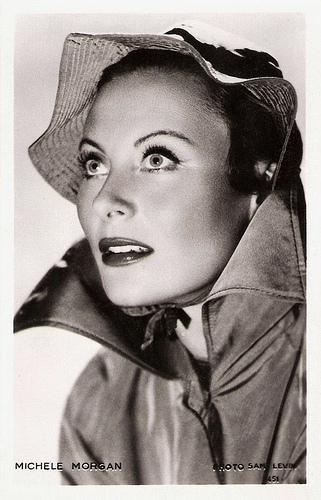
French postcard by Editions P.I., Paris, no. 451. Photo: Sam Lévin.
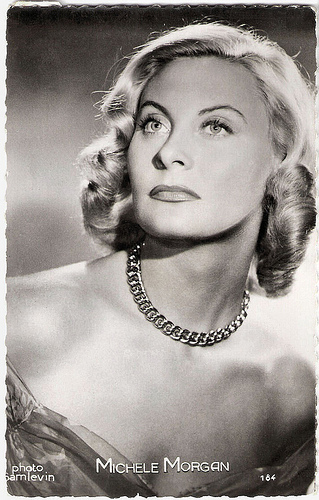
French postcard by Editions P.I., Paris, no. 184. Photo: Sam Lévin.
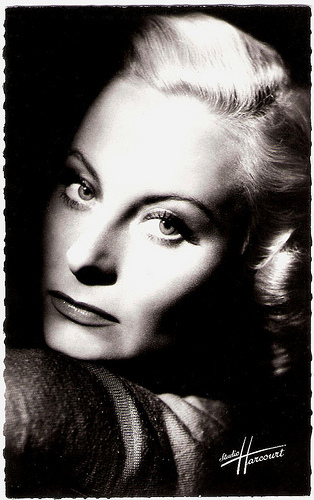
French postcard by Editions du Globe (E.D.U.G.), no. 66. Photo: Studio Harcourt.
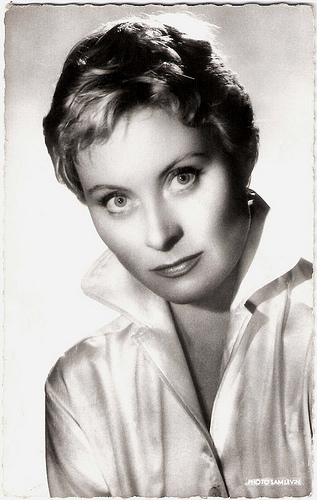
French postcard by Editions du Globe, Paris, no. 616. Photo: Sam Lévin.
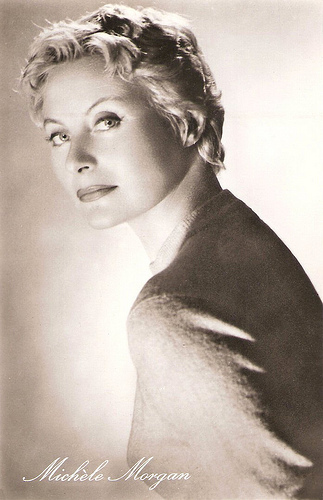
East-German postcard by VEB Progress Film-Vertrieb, Berlin, no. 810. Retail price: 0,20 DM. Publicity still for Les orgueilleux/The Proud Ones (Yves Allégret, Rafael E. Portas, 1953).
No Goodbye Girl
During the 1950s, Michèle Morgan continued to be a major star of the European cinema. She regularly co-starred with her husband, Henri Vidal . Their films together include La belle que voilà/Here Is The Beauty (Jean-Paul Le Chanois, 1950), L'étrange Mme X/The Strange Madame X (Jean Grémillon, 1951), the lavish historical epic Napoléon (Sacha Guitry, 1955) in which she played Josephine, and Pourquoi viens-tu si tard?/Why Do You Come So Late? (Henri Decoin, 1959).
She appeared opposite idol Gérard Philipe in Les Orgueilleux/The Proud Ones (Yves Allégret, 1953) and in the bittersweet Les Grandes Manœuvres/Grand Maneuver(René Clair, 1955). Hal Erickson at AllMovie about the latter: "Phillipe plays a dashing dragoons officer, vintage 1913, who wagers his friends that he can make the next woman who enters the room fall in love with him. In strides drop-dead gorgeous Michele Morgan, and the rest writes itself. Phillipe plans a slow seduction and a quick goodbye; Morgan, need we say, is no 'goodbye girl'."
She starred in the historical film was Marie-Antoinette reine de France/Marie Antoinette Queen of France (Jean Delannoy, 1956). Morgan plays the Austrian princess who becomes the last Queen of France in waning years of the 18th century. She also appeared in the American production The Vintage (Jeffrey Hayden, 1957) with Pier Angeli and Mel Ferrer.
In the remake Menschem im Hotel/Grand Hotel (1959), Morgan played the role of Grusinskaya, which was originally portrayed by Greta Garbo in the award-winning 1932 classic Grand Hotel. Based on a book by Vicki Baum, all of the action takes place in the course of one day in a luxury hotel in Berlin. Grusinkaya is a ballerina staying at the hotel, other guests include a sophisticated thief ( O.W. Fischer ), a dying man ( Heinz Rühmann ), a businessman (Gert Fröbe), and a stenographer ( Sonja Ziemann ). Hal Erickson: "Events intertwine the lives of these strangers, bringing them together for some dramatic moments but not quite as effectively as in the 1932 film."
Henri Vidal suddenly died in 1959. A year later, Morgan married film director and actor/writer Gérard Oury and stayed with him till his death in 2006.
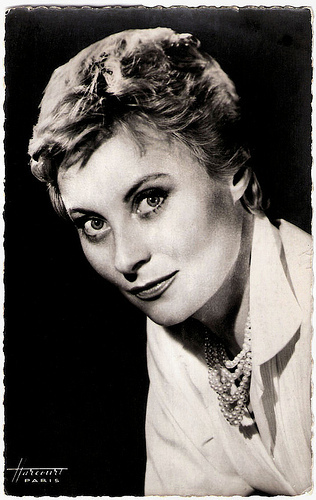
French postcard by Editions du Globe, Paris, no. 579. Photo: Studio Harcourt.
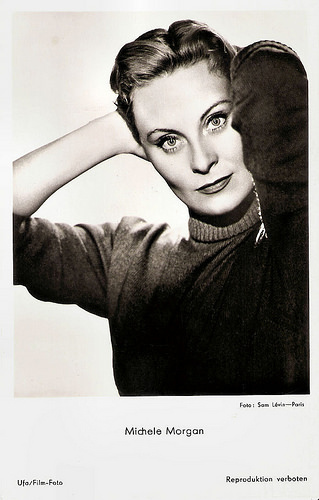
German postcard by Ufa, Berlin-Tempelhof, no. FK 418. Photo: Sam Lévin, Paris.
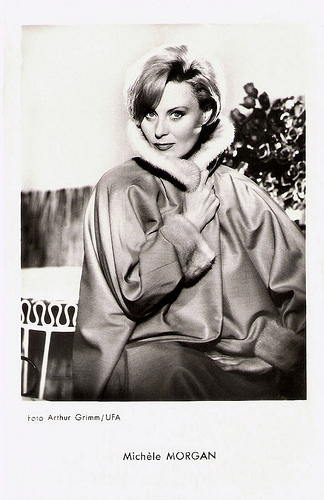
French postcard by Editions P.I., Paris (Licency holder in France for Ufa), no. FK 17A. Offered by Les carbones Korès 'Carboplane'. Photo: Arthur Grimm / Ufa.
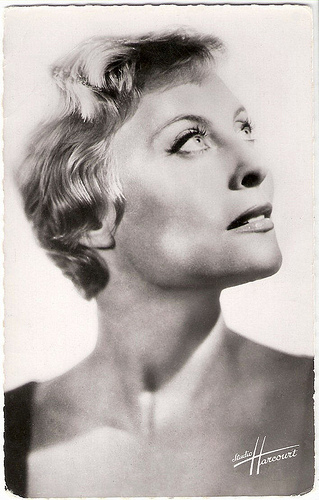
French postcard by Editions du Globe, Paris, no. 283. Photo: Studio Harcourt.
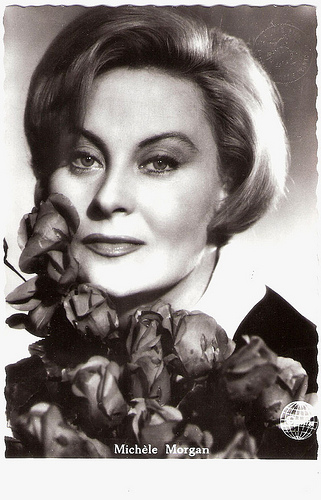
Dutch postcard, no. 960.
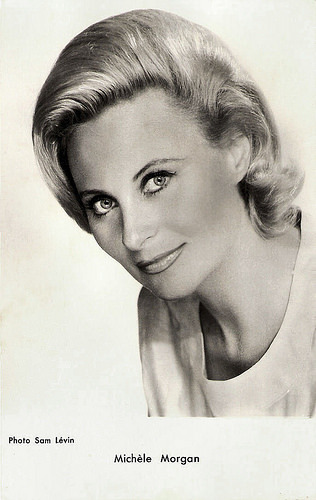
French postcard by Editions P.I., offered by Les Carbones Korès Carboplane, no. 1137. Photo: Sam Lévin.
Cravates Michèle Morgan
Michèle Morgan appeared in three films with her third husband, actor and director Gérard Oury: La belle que voilà/Here Is The Beauty (Jean-Paul Le Chanois, 1950), Le miroir à deux faces/The Mirror has Two Faces (André Cayatte, 1958) and Un homme et une femme, 20 ans déjà/A Man and a Woman: 20 Years Later (Claude Lelouch, 1986). She also worked under his direction in a segment of Le crime ne paie pas/Crime Does Not Pay (Gérard Oury, 1962).
Her career took a downturn when the French Nouvelle Vague (New Wave) movement came along in the late 1950s. Its key directors decided to cut ties with the classic French cinema, which many of them had largely despised since the days they had been serving as critics for the Cahiers du cinéma. The only film she did by a Nouvelle Vague auteur was Claude Chabrol's Landru (1963), about French serial killer Henri-Desire Landru (Charles Denner), who wined, dined, scammed, and dismembered over 10 women during WW I. Morgan played a victim, who's eventually burned down by Landru to go up in smoke.
Throughout the 1960s, Morgan continued working in the international cinema. She appeared in films like the Italian historical drama Il fornaretto di Venezia/The Scapegoat (Duccio Tessari, 1963) with Jacques Perrin , the American war drama Lost Command (Mark Robson, 1966) starring Anthony Quinn , and the French comedy Benjamin (Michel Deville, 1968) with Catherine Deneuve and Pierre Clémenti.
In 1968 she largely retired from the screen, but has occasionally returned in films like Le Chat et la souris/Cat and Mouse (Claude Lelouch, 1975) with Serge Reggiani , and Stanno tutti bene/Everbody's Fine (Giuseppe Tornatore, 1990) with Marcello Mastroianni . About the first, D.B. DuMonteil notes at IMDb : "Lelouch really plays cat and mouse with the audience as Detective Lechat (sic)(Regggiani) does with his still attractive suspect (or is it the other way about?). There are plenty of funny scenes and some witty lines. (...) Objections: there are not enough scenes where Reggiani and Morgan are together".
From the 1970s on, she has concentrated on painting, designing ties and writing poems. As a painter she has had several successful exhibitions in Paris. She established her own tie label Cravates Michèle Morgan in the late 1970s. In 1977 she published her autobiography Avec ces yeux-là (With Those Eyes). In the 1980s and 1990s she also appeared in different TV films and miniseries.
Michèle Morgan was named Chevalier of the Légion d'honneur (Legion of Honor) in 1969, and she was made an Officer of the Ordre national du Mérite (French National Order of Merit) in 1975. Morgan also has a star on the Hollywood Walk of Fame. And in 1992 she was given a Honorary César Award for her long service to the French cinema.
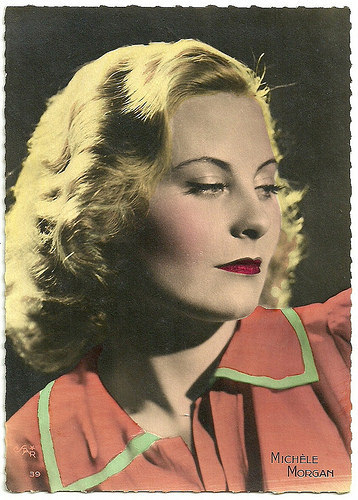
French postcard by Editions P.I., Paris, no. 39. Photo: Star.
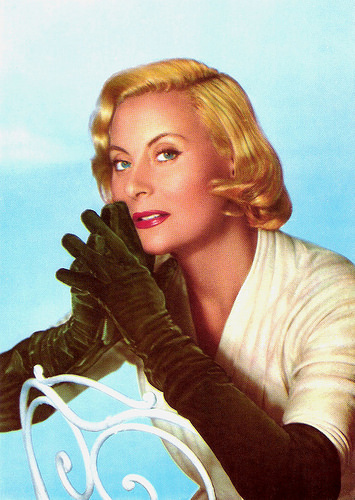
French postcard by Editions P.I., Paris, no. 1009. Photo: Sam Lévin.
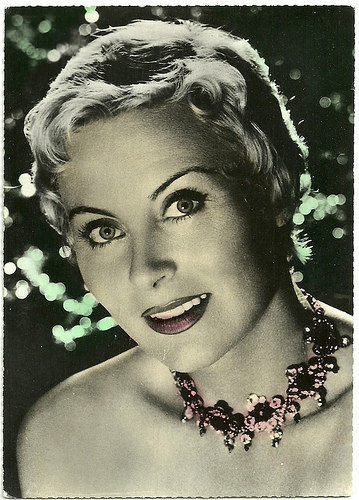
French postcard by Z K, no. 1937.
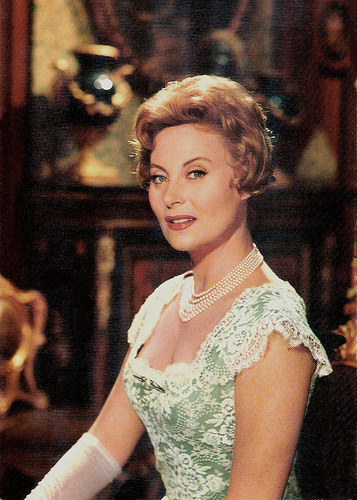
Italian postcard by Rotalcolor, Milano, no. 72.
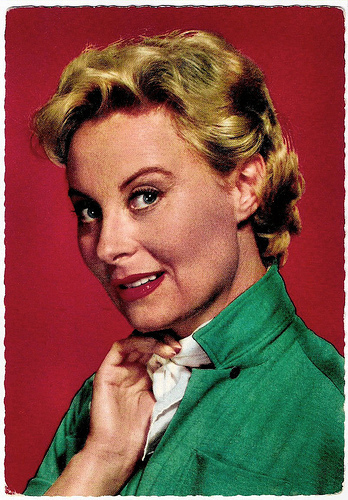
German postcard by ISV, no. B 15. Photo: MGM.
Trailer for Les Orgueilleux/The Proud Ones (Yves Allégret, 1953). Source: Plamen Plamenov (YouTube).
Trailer for The Vintage (1957). Source: Luis Peix (YouTube).
Sources: Hal Erickson (AllMovie), (IMDb), DB DuMonteil (IMDb), Wikipedia, AllMovie, and .

French postcard by Editions P.I., Paris, no. 451. Photo: Sam Lévin.

French postcard by Editions P.I., Paris, no. 184. Photo: Sam Lévin.

French postcard by Editions du Globe (E.D.U.G.), no. 66. Photo: Studio Harcourt.

French postcard by Editions du Globe, Paris, no. 616. Photo: Sam Lévin.

East-German postcard by VEB Progress Film-Vertrieb, Berlin, no. 810. Retail price: 0,20 DM. Publicity still for Les orgueilleux/The Proud Ones (Yves Allégret, Rafael E. Portas, 1953).
No Goodbye Girl
During the 1950s, Michèle Morgan continued to be a major star of the European cinema. She regularly co-starred with her husband, Henri Vidal . Their films together include La belle que voilà/Here Is The Beauty (Jean-Paul Le Chanois, 1950), L'étrange Mme X/The Strange Madame X (Jean Grémillon, 1951), the lavish historical epic Napoléon (Sacha Guitry, 1955) in which she played Josephine, and Pourquoi viens-tu si tard?/Why Do You Come So Late? (Henri Decoin, 1959).
She appeared opposite idol Gérard Philipe in Les Orgueilleux/The Proud Ones (Yves Allégret, 1953) and in the bittersweet Les Grandes Manœuvres/Grand Maneuver(René Clair, 1955). Hal Erickson at AllMovie about the latter: "Phillipe plays a dashing dragoons officer, vintage 1913, who wagers his friends that he can make the next woman who enters the room fall in love with him. In strides drop-dead gorgeous Michele Morgan, and the rest writes itself. Phillipe plans a slow seduction and a quick goodbye; Morgan, need we say, is no 'goodbye girl'."
She starred in the historical film was Marie-Antoinette reine de France/Marie Antoinette Queen of France (Jean Delannoy, 1956). Morgan plays the Austrian princess who becomes the last Queen of France in waning years of the 18th century. She also appeared in the American production The Vintage (Jeffrey Hayden, 1957) with Pier Angeli and Mel Ferrer.
In the remake Menschem im Hotel/Grand Hotel (1959), Morgan played the role of Grusinskaya, which was originally portrayed by Greta Garbo in the award-winning 1932 classic Grand Hotel. Based on a book by Vicki Baum, all of the action takes place in the course of one day in a luxury hotel in Berlin. Grusinkaya is a ballerina staying at the hotel, other guests include a sophisticated thief ( O.W. Fischer ), a dying man ( Heinz Rühmann ), a businessman (Gert Fröbe), and a stenographer ( Sonja Ziemann ). Hal Erickson: "Events intertwine the lives of these strangers, bringing them together for some dramatic moments but not quite as effectively as in the 1932 film."
Henri Vidal suddenly died in 1959. A year later, Morgan married film director and actor/writer Gérard Oury and stayed with him till his death in 2006.

French postcard by Editions du Globe, Paris, no. 579. Photo: Studio Harcourt.

German postcard by Ufa, Berlin-Tempelhof, no. FK 418. Photo: Sam Lévin, Paris.

French postcard by Editions P.I., Paris (Licency holder in France for Ufa), no. FK 17A. Offered by Les carbones Korès 'Carboplane'. Photo: Arthur Grimm / Ufa.

French postcard by Editions du Globe, Paris, no. 283. Photo: Studio Harcourt.

Dutch postcard, no. 960.

French postcard by Editions P.I., offered by Les Carbones Korès Carboplane, no. 1137. Photo: Sam Lévin.
Cravates Michèle Morgan
Michèle Morgan appeared in three films with her third husband, actor and director Gérard Oury: La belle que voilà/Here Is The Beauty (Jean-Paul Le Chanois, 1950), Le miroir à deux faces/The Mirror has Two Faces (André Cayatte, 1958) and Un homme et une femme, 20 ans déjà/A Man and a Woman: 20 Years Later (Claude Lelouch, 1986). She also worked under his direction in a segment of Le crime ne paie pas/Crime Does Not Pay (Gérard Oury, 1962).
Her career took a downturn when the French Nouvelle Vague (New Wave) movement came along in the late 1950s. Its key directors decided to cut ties with the classic French cinema, which many of them had largely despised since the days they had been serving as critics for the Cahiers du cinéma. The only film she did by a Nouvelle Vague auteur was Claude Chabrol's Landru (1963), about French serial killer Henri-Desire Landru (Charles Denner), who wined, dined, scammed, and dismembered over 10 women during WW I. Morgan played a victim, who's eventually burned down by Landru to go up in smoke.
Throughout the 1960s, Morgan continued working in the international cinema. She appeared in films like the Italian historical drama Il fornaretto di Venezia/The Scapegoat (Duccio Tessari, 1963) with Jacques Perrin , the American war drama Lost Command (Mark Robson, 1966) starring Anthony Quinn , and the French comedy Benjamin (Michel Deville, 1968) with Catherine Deneuve and Pierre Clémenti.
In 1968 she largely retired from the screen, but has occasionally returned in films like Le Chat et la souris/Cat and Mouse (Claude Lelouch, 1975) with Serge Reggiani , and Stanno tutti bene/Everbody's Fine (Giuseppe Tornatore, 1990) with Marcello Mastroianni . About the first, D.B. DuMonteil notes at IMDb : "Lelouch really plays cat and mouse with the audience as Detective Lechat (sic)(Regggiani) does with his still attractive suspect (or is it the other way about?). There are plenty of funny scenes and some witty lines. (...) Objections: there are not enough scenes where Reggiani and Morgan are together".
From the 1970s on, she has concentrated on painting, designing ties and writing poems. As a painter she has had several successful exhibitions in Paris. She established her own tie label Cravates Michèle Morgan in the late 1970s. In 1977 she published her autobiography Avec ces yeux-là (With Those Eyes). In the 1980s and 1990s she also appeared in different TV films and miniseries.
Michèle Morgan was named Chevalier of the Légion d'honneur (Legion of Honor) in 1969, and she was made an Officer of the Ordre national du Mérite (French National Order of Merit) in 1975. Morgan also has a star on the Hollywood Walk of Fame. And in 1992 she was given a Honorary César Award for her long service to the French cinema.

French postcard by Editions P.I., Paris, no. 39. Photo: Star.

French postcard by Editions P.I., Paris, no. 1009. Photo: Sam Lévin.

French postcard by Z K, no. 1937.

Italian postcard by Rotalcolor, Milano, no. 72.

German postcard by ISV, no. B 15. Photo: MGM.
Trailer for Les Orgueilleux/The Proud Ones (Yves Allégret, 1953). Source: Plamen Plamenov (YouTube).
Trailer for The Vintage (1957). Source: Luis Peix (YouTube).
Sources: Hal Erickson (AllMovie), (IMDb), DB DuMonteil (IMDb), Wikipedia, AllMovie, and .
Published on December 20, 2016 22:00
Michèle Morgan (1920-2016), Part 1
Today French actress Michèle Morgan (1920-2016) has died. The classic blonde beauty has been one of her country's most popular leading ladies for over five decades. The delicate, sophisticated, and detached star was especially noted for her large, expressive eyes. Tomorrow follows part two of this post.
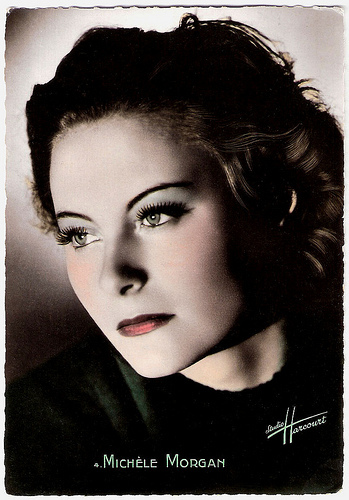
French postcard by Greff S.E.R.P. Editeur, Paris, no. 4. Photo: Studio Harcourt.
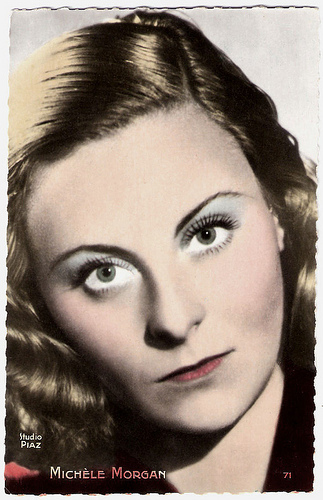
French postcard by Editions P.I., no. 71. Photo: Studio Piaz.
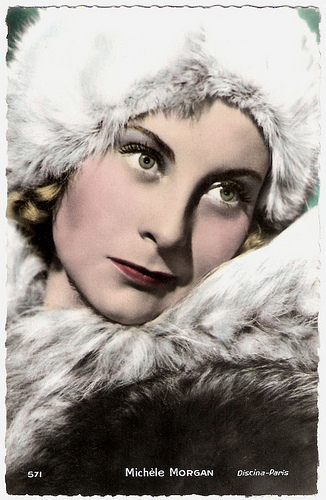
French postcard by Edit. Chantal, Rueil, no. 571. Photo: Discina, Paris.
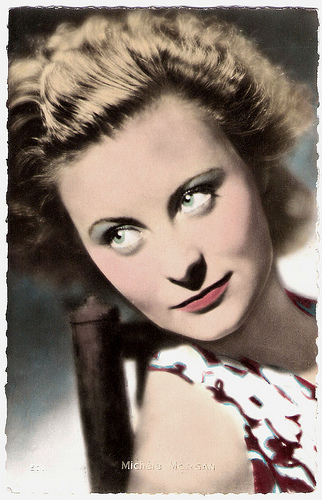
French postcard by Edit. Chantal, Rueil, no. 571 (?).
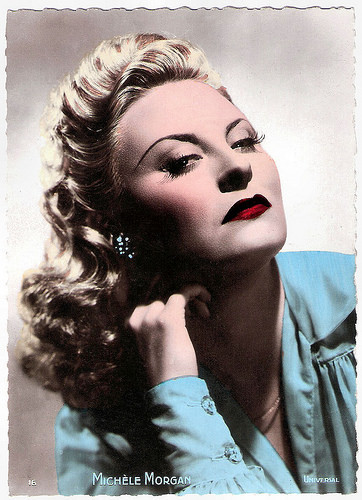
French postcard by Editions P.I., Paris, no. 16. Photo: Universal.
Gloomy Allure
Michèle Morgan was born as Simone Renée Roussel in 1920, in Neuilly-sur-Seine, France. Michèle has three younger brothers. Her father was a departmental head in an export house of fragrances. After the crisis of 1929, he found himself unemployed and relocated the family from the wealthy Parisian suburb of Neuilly-sur-Seine to Dieppe in Upper Normandy.
It was at the Dieppe Casino that Michèle began to attend stage shows and became enamoured with the idea of acting. At 15, she left home with her younger brother Paul to pursue an acting career in Paris. There, she began her career working as an extra. Through a casting agency, she won a bit role in Mademoiselle Mozart/Meet Miss Mozart (Yvan Noé, 1935) starring Danielle Darrieux .
The film's director, Yvan Noé, suggested her to perfect her acting technique by taking lessons. With her salaries for small roles in films like Une fille à papa/A Daughter for Father (René Guissart, 1935) with Josette Day , she paid for drama classes. Morgan studied acting under René Simon and chose the pseudonym of Michèle Morgan, taking it from the Morgan Bank in Paris.
She was soon noticed by director Marc Allégret who offered her a major role in the comedy Gribouille (1937), opposite the great French actor Raimu . Then came Orage (Marc Allégret, 1938) with Charles Boyer , the classic romantic crime drama Le Quai des brumes/Port of Shadows (Marcel Carné, 1938) opposite Jean Gabin and Michel Simon , and Remorques (Jean Grémillon, 1941) again opposite Jean Gabin .
These films established Michèle Morgan as one of the leading actress of the time in French cinema. Gary Brumburgh at IMDb : "Her remote, enigmatic features and gloomy allure had audiences comparing her to a young Greta Garbo ."

French postcard by Editions O.P., Paris, no. 5. Photo: Studio Harcourt.
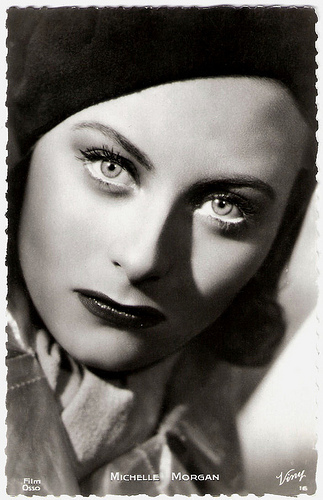
French postcard by Viny, no. 16. Photo: Film Osso. Publicity still for Marcel Carné's classic film Quai des brûmes/Port of Shadows (1938).
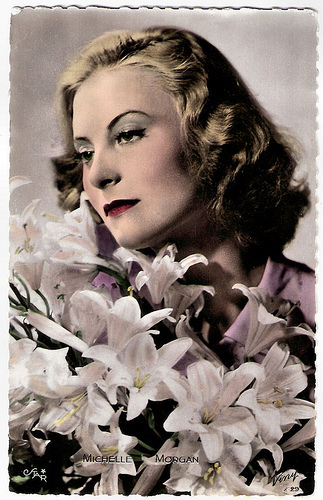
French postcard by Viny, no. 29. Photo: Star.
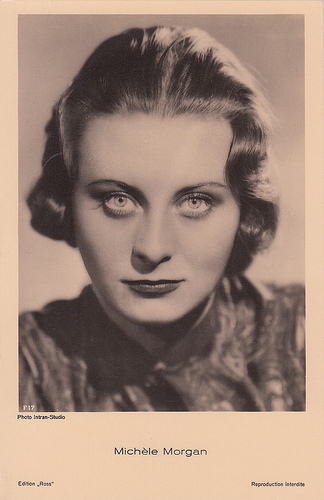
French postcard by Edition Ross, no. F17. Photo: Intran-Studio. Collection: Marlène Pilaete.
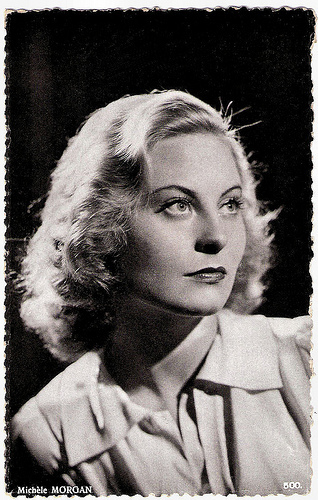
French postcard by C.M.B., no. 500.
So-so Reception in the USA
Upon the invasion of France in 1940 by the Germans, Michèle Morgan left for the United States. However, she had already been offered her contract with RKO before the start of WW2. She married American actor/singer William Marshall in 1942. Their son Mike Marshall (1944-2005) later became an actor in both France and Hollywood.
Morgan started to work for RKO. She was considered for the role of Lina in Alfred Hitchcock's Suspicion (1941), but was soon passed over since her English wasn't deemed good enough. The role went to Joan Fontaine, who won the Best Actress Oscar for her performance. Morgan then worked hard to perfect her English and, for an entire year, she saw a linguistic coach for several hours a day and improved considerably.
Morgan's first Hollywood film became Joan of Paris (Robert Stevenson, 1942), co-starring RKO leading man Paul Henreid. It would be her only American hit. Her Hollywood adventure proved to be disappointing. Gary Brumburgh at IMDb : "Her eventual move to Hollywood was based purely on her European prestige, but she did not stand out among the other female foreign imports of that time, such as Ingrid Bergman ."
Nothing major came her way apart from rather routine sultry roles amid WW II surroundings. A disaster was her part in the musical Higher and Higher (Tim Whelan, 1943) starring Jack Haley and Frank Sinatra. Morgan had no prior singing experience and was supposed to take a few lessons as quickly as possible.
Morgan was considered for the role of Ilsa Lund in Casablanca (Michael Curtiz, 1942), but her studio RKO wouldn't release her for the amount of money Warner Bros was offering and Ingrid Bergman was cast instead. Later, she did make Passage to Marseille (Michael Curtiz, 1944)with director Michael Curtiz and Humphrey Bogart. But this film was far less successful than Casablanca. Her last American film was the noirish The Chase (Arthur Ripley, 1946) based on a novel by Cornell Woolrich and starring Robert Cummings.
After the so-so reception for her American films, Michèle Morgan returned to France. In her autobiography Avec ces yeux-là (With Those Eyes, 1977), she tells an ominous anecdote about her house in Hollywood. She had a house built at 10050 Cielo Drive, slightly isolated from the other star mansions. Michèle was scared at the thought of staying alone at the place and claimed that she was often hearing sinister noises. She decided to move in with her new husband, William Marshall. In 1969, the house became site of Sharon Tate's murder by the followers of Charles Manson.
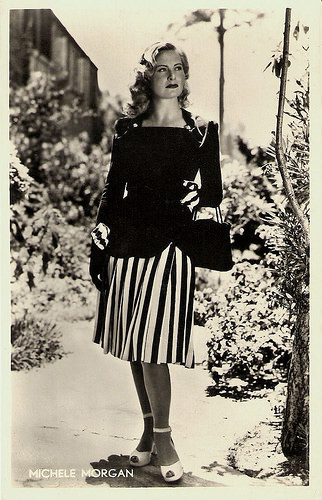
Dutch postcard by S. & v. H. A. Photo: M.P.E.A.
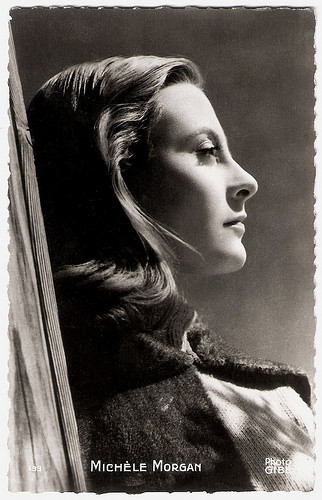
French postcard by Editions P.I., La Garenne-Colombes, no. 133. Photo: GIBE.
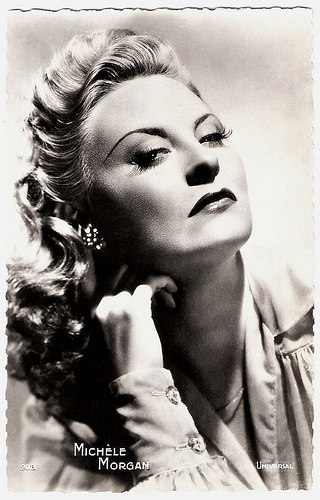
French postcard by Editions P.I., Paris, no. 208. Photo: Universal.
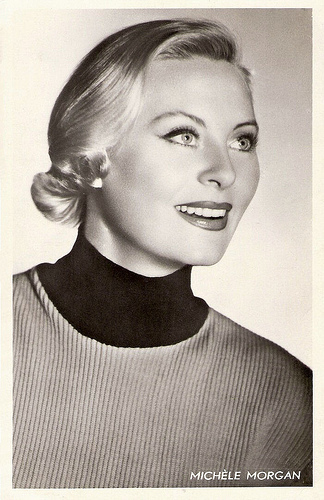
Dutch postcard by Takken, Utrecht, no. AX 1939.
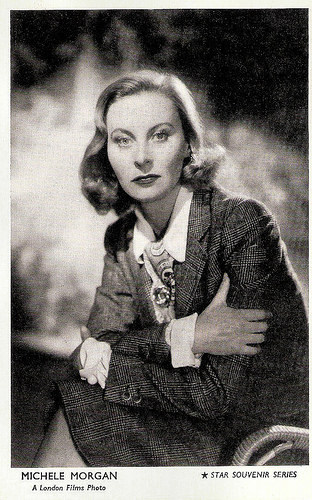
British postcard in the Star Souvenir Series by Jarrold and Sons, Ltd, Norwich, no. 61. Photo: London Films. Publicity still for Maria Chapdelaine (Marc Allégret, 1950).
With Those Eyes
At home in France, Michèle Morgan was treated much better than in Hollywood. She received the Best Actress award at the Cannes Film Festival for her touching performance as the blind heroine in La symphonie pastorale (Jean Delannoy, 1946) with Pierre Blanchar . She then appeared in the British thriller The Fallen Idol (Carol Reed, 1948) opposite Ralph Richardson .
Next, she moved to Italy for Fabiola (Alessandro Blasetti, 1949). After several years of wartime austerity, the Italian film industry returned to the Peplum, the sand and sandals spectacle. Morgan plays the title role, the daughter of a Roman aristocrat ( Michel Simon ) during the takeover by Emperor Constantine. As a reaction to Constantine's Christian conversion policy, many old-line Romans are persecuting the city's Christian community, killing the believers off before Constantine marches into town. Fabiola is loyal to her Christian-sympathising father but is irresistibly drawn to a Roman gladiator ( Henri Vidal ).
Privately she was also drawn to Vidal. During the shooting of the film, she secretly began a relationship with her co-star. At the time her marriage to William Marshall was already falling to pieces. Marshall, who wished to gain custody of their son, hired some private detectives to follow Morgan's moves and eventually managed to have her photographed in bed with Henri Vidal . Morgan therefore lost custody of Mike due to adultery. In 1950 Vidal and Morgan married.
In 1950 she also appeared in Maria Chapdelaine/The Naked Heart (Marc Allegret, 1950). Adaptor and director Allegret has fashioned the novel by Louis Hemon into a vehicle for his successful discovery. Morgan plays a young woman whose romantic fantasies begin spilling over into actuality. The film's novelty value is its setting: a remote village in Northern Canada. Filmed simultaneously in French and English-language versions, The Naked Heart was produced independently on a tiny budget. Hal Erickson at AllMovie : "while the seams begin to show towards the end, for the most part the film works."

French postcard by EPC, no. 175.
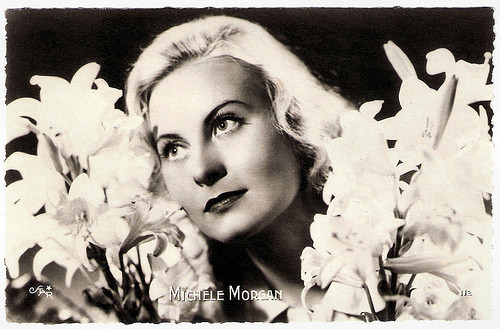
French postcard by Editions O.P., Paris, no. 112. Photo: Star.
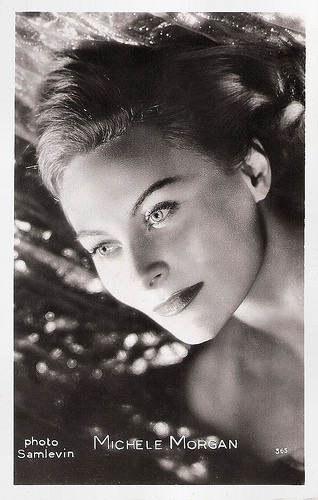
French postcard by Editions P.I., Paris, no. 365. Photo: Sam Lévin, Paris.

French postcard by Editions P.I., offered by Les Carbones Korès, no. 80. Photo: Qibé. Publicity still for Aux yeux du souvenir/To the Eyes of Memory (Jean Delannoy, 1948) with Jean Chevrier and Jean Marais.
Scene from Remorques (1941). Source: Carochoupi (YouTube).
To be continued tomorrow.
Sources: (IMDb), Hal Erickson (AllMovie), Wikipedia, AllMovie, and .

French postcard by Greff S.E.R.P. Editeur, Paris, no. 4. Photo: Studio Harcourt.

French postcard by Editions P.I., no. 71. Photo: Studio Piaz.

French postcard by Edit. Chantal, Rueil, no. 571. Photo: Discina, Paris.

French postcard by Edit. Chantal, Rueil, no. 571 (?).

French postcard by Editions P.I., Paris, no. 16. Photo: Universal.
Gloomy Allure
Michèle Morgan was born as Simone Renée Roussel in 1920, in Neuilly-sur-Seine, France. Michèle has three younger brothers. Her father was a departmental head in an export house of fragrances. After the crisis of 1929, he found himself unemployed and relocated the family from the wealthy Parisian suburb of Neuilly-sur-Seine to Dieppe in Upper Normandy.
It was at the Dieppe Casino that Michèle began to attend stage shows and became enamoured with the idea of acting. At 15, she left home with her younger brother Paul to pursue an acting career in Paris. There, she began her career working as an extra. Through a casting agency, she won a bit role in Mademoiselle Mozart/Meet Miss Mozart (Yvan Noé, 1935) starring Danielle Darrieux .
The film's director, Yvan Noé, suggested her to perfect her acting technique by taking lessons. With her salaries for small roles in films like Une fille à papa/A Daughter for Father (René Guissart, 1935) with Josette Day , she paid for drama classes. Morgan studied acting under René Simon and chose the pseudonym of Michèle Morgan, taking it from the Morgan Bank in Paris.
She was soon noticed by director Marc Allégret who offered her a major role in the comedy Gribouille (1937), opposite the great French actor Raimu . Then came Orage (Marc Allégret, 1938) with Charles Boyer , the classic romantic crime drama Le Quai des brumes/Port of Shadows (Marcel Carné, 1938) opposite Jean Gabin and Michel Simon , and Remorques (Jean Grémillon, 1941) again opposite Jean Gabin .
These films established Michèle Morgan as one of the leading actress of the time in French cinema. Gary Brumburgh at IMDb : "Her remote, enigmatic features and gloomy allure had audiences comparing her to a young Greta Garbo ."

French postcard by Editions O.P., Paris, no. 5. Photo: Studio Harcourt.

French postcard by Viny, no. 16. Photo: Film Osso. Publicity still for Marcel Carné's classic film Quai des brûmes/Port of Shadows (1938).

French postcard by Viny, no. 29. Photo: Star.

French postcard by Edition Ross, no. F17. Photo: Intran-Studio. Collection: Marlène Pilaete.

French postcard by C.M.B., no. 500.
So-so Reception in the USA
Upon the invasion of France in 1940 by the Germans, Michèle Morgan left for the United States. However, she had already been offered her contract with RKO before the start of WW2. She married American actor/singer William Marshall in 1942. Their son Mike Marshall (1944-2005) later became an actor in both France and Hollywood.
Morgan started to work for RKO. She was considered for the role of Lina in Alfred Hitchcock's Suspicion (1941), but was soon passed over since her English wasn't deemed good enough. The role went to Joan Fontaine, who won the Best Actress Oscar for her performance. Morgan then worked hard to perfect her English and, for an entire year, she saw a linguistic coach for several hours a day and improved considerably.
Morgan's first Hollywood film became Joan of Paris (Robert Stevenson, 1942), co-starring RKO leading man Paul Henreid. It would be her only American hit. Her Hollywood adventure proved to be disappointing. Gary Brumburgh at IMDb : "Her eventual move to Hollywood was based purely on her European prestige, but she did not stand out among the other female foreign imports of that time, such as Ingrid Bergman ."
Nothing major came her way apart from rather routine sultry roles amid WW II surroundings. A disaster was her part in the musical Higher and Higher (Tim Whelan, 1943) starring Jack Haley and Frank Sinatra. Morgan had no prior singing experience and was supposed to take a few lessons as quickly as possible.
Morgan was considered for the role of Ilsa Lund in Casablanca (Michael Curtiz, 1942), but her studio RKO wouldn't release her for the amount of money Warner Bros was offering and Ingrid Bergman was cast instead. Later, she did make Passage to Marseille (Michael Curtiz, 1944)with director Michael Curtiz and Humphrey Bogart. But this film was far less successful than Casablanca. Her last American film was the noirish The Chase (Arthur Ripley, 1946) based on a novel by Cornell Woolrich and starring Robert Cummings.
After the so-so reception for her American films, Michèle Morgan returned to France. In her autobiography Avec ces yeux-là (With Those Eyes, 1977), she tells an ominous anecdote about her house in Hollywood. She had a house built at 10050 Cielo Drive, slightly isolated from the other star mansions. Michèle was scared at the thought of staying alone at the place and claimed that she was often hearing sinister noises. She decided to move in with her new husband, William Marshall. In 1969, the house became site of Sharon Tate's murder by the followers of Charles Manson.

Dutch postcard by S. & v. H. A. Photo: M.P.E.A.

French postcard by Editions P.I., La Garenne-Colombes, no. 133. Photo: GIBE.

French postcard by Editions P.I., Paris, no. 208. Photo: Universal.

Dutch postcard by Takken, Utrecht, no. AX 1939.

British postcard in the Star Souvenir Series by Jarrold and Sons, Ltd, Norwich, no. 61. Photo: London Films. Publicity still for Maria Chapdelaine (Marc Allégret, 1950).
With Those Eyes
At home in France, Michèle Morgan was treated much better than in Hollywood. She received the Best Actress award at the Cannes Film Festival for her touching performance as the blind heroine in La symphonie pastorale (Jean Delannoy, 1946) with Pierre Blanchar . She then appeared in the British thriller The Fallen Idol (Carol Reed, 1948) opposite Ralph Richardson .
Next, she moved to Italy for Fabiola (Alessandro Blasetti, 1949). After several years of wartime austerity, the Italian film industry returned to the Peplum, the sand and sandals spectacle. Morgan plays the title role, the daughter of a Roman aristocrat ( Michel Simon ) during the takeover by Emperor Constantine. As a reaction to Constantine's Christian conversion policy, many old-line Romans are persecuting the city's Christian community, killing the believers off before Constantine marches into town. Fabiola is loyal to her Christian-sympathising father but is irresistibly drawn to a Roman gladiator ( Henri Vidal ).
Privately she was also drawn to Vidal. During the shooting of the film, she secretly began a relationship with her co-star. At the time her marriage to William Marshall was already falling to pieces. Marshall, who wished to gain custody of their son, hired some private detectives to follow Morgan's moves and eventually managed to have her photographed in bed with Henri Vidal . Morgan therefore lost custody of Mike due to adultery. In 1950 Vidal and Morgan married.
In 1950 she also appeared in Maria Chapdelaine/The Naked Heart (Marc Allegret, 1950). Adaptor and director Allegret has fashioned the novel by Louis Hemon into a vehicle for his successful discovery. Morgan plays a young woman whose romantic fantasies begin spilling over into actuality. The film's novelty value is its setting: a remote village in Northern Canada. Filmed simultaneously in French and English-language versions, The Naked Heart was produced independently on a tiny budget. Hal Erickson at AllMovie : "while the seams begin to show towards the end, for the most part the film works."

French postcard by EPC, no. 175.

French postcard by Editions O.P., Paris, no. 112. Photo: Star.

French postcard by Editions P.I., Paris, no. 365. Photo: Sam Lévin, Paris.

French postcard by Editions P.I., offered by Les Carbones Korès, no. 80. Photo: Qibé. Publicity still for Aux yeux du souvenir/To the Eyes of Memory (Jean Delannoy, 1948) with Jean Chevrier and Jean Marais.
Scene from Remorques (1941). Source: Carochoupi (YouTube).
To be continued tomorrow.
Sources: (IMDb), Hal Erickson (AllMovie), Wikipedia, AllMovie, and .
Published on December 20, 2016 13:18
December 19, 2016
Zsa Zsa Gabor (1917-2016)
Last Sunday, Hungarian-born actress Zsa Zsa Gabor died of heart failure, aged 99. She sparkled brightly for over 60 years as a symbol of continental glamour and mystery. Her main period in the cinema was in the 1950s, with as a highlight Moulin Rouge (1952), but Gabor was better known for her nine marriages and countless personal appearances on talk shows and in gossip magazines.

Vintage postcard, no. 2054. Photo: publicity still for 3 Ring Circus (Joseph Pevney, 1954).
Queen of Outer Space
Zsa Zsa Gabor was born Sári Gábor in 1917, in Budapest, then part of the Austro-Hungarian Empire (now Hungary). Her parents were Jolie Gabor (née Janszieka Tilleman, Countess de Szigethy) and Major Vilmos Gabor (a Hungarian officer, born Farkas Miklós Grün), both from Jewish families. They named her after Sári Fedák , who was at the time Hungary's most celebrated actress. Her siblings were socialite Magda Gabor and actress Eva Gabor.
Her mother was wealthy. Zsa Zsa studied at a Swiss boarding school in the 1930s. She was discovered by famous operatic Richard Tauber on a trip to Vienna in 1934. He invited her to sing the soubrette role in his new operetta, Der singende Traum (The Singing Dream), at the Theater an der Wien. After spending three months at the Vienna Acting Academy, Gabor made her stage debut. Two years later she was crowned Miss Hungary 1936, though she was later disqualified as she'd fibbed about her true age.
In 1937, she married her first husband, 35-year-old Turkish government official Burhan Asaf Belge. Eventually she followed her sister Eva to the USA. Zsa Zsa arrived in Hollywood in 1941 with a letter of introduction to Basil and Ouida Rathbone, who granted her admittance into the upper echelons of Hollywood society. In 1944, her mother escaped from Nazi-occupied Budapest, also settling in the USA. One evening at the nightclub Ciro’s, Zsa Zsa met Conrad Hilton and soon the radiant, beautiful blonde married the hotel magnate.
In the early 1950s, Zsa Zsa began to appear on television series. Her first film was at Metro-Goldwyn-Mayer in the musical Lovely to Look At (Mervyn LeRoy, 1952), co-starring Kathryn Grayson and Red Skelton. She next played a supporting role in the comedy We're Not Married! (Edmund Goulding, 1952) at 20th Century Fox, with Ginger Rogers.
Her break into movies big time occurred next with her starring role as French can-can dancer Jane Avril in Moulin Rouge (John Huston, 1952), the fictional account of French artist Henri de Toulouse-Lautrec (José Ferrer). In the following years, Zsa Zsa slipped back into supporting roles in films such as Lili (Charles Walters, 1953) and 3 Ring Circus (Joseph Pevney, 1954).
She also appeared in European films like the French comedy L'ennemi public n° 1/The Most Wanted Man (Henri Verneuil, 1953) opposite Fernandel . Her main period of film work was in the 1950s, with supporting roles in Death of a Scoundrel (Charles Martin, 1956) with third husband George Sanders and Yvonne De Carlo , the British crime drama The Man Who Wouldn't Talk (Herbert Wilcox, 1958) with Anna Neagle , and as a strip club owner in Touch of Evil (Orson Welles, 1958). One of her few leading roles was in as the despotic queen Talleah of the planet Venus in the cult camp classic Queen of Outer Space (Edward Bernds, 1958).

French postcard by Editions P.I., Paris, no. 28C, 1954. Photo: Paramount.

Italian postcard by Casa Editr. Ballerini & Fratini, Firenze (B.F.F. Edit), no. 3123. Photo: Paramount.
Catty comments and juicy stories
By the 1960s, Zsa Zsa Gabor was appearing more as herself in Hollywood movies. She appeared to follow her own persona around, and cameo appearances were the order of the day in films such as Pepe (George Sidney, 1960) and Jack of Diamonds (Don Taylor, 1967). More interesting work she found on TV and in European productions like La contessa azzurra/The blue countess (Claudio Gora, 1960) with Amedeo Nazzari .
On TV she had two guest shots on Batman (1966-1968) as gold-digger Minerva, a villainess who stole people's minds with the help of her mineral spa. However, she shone brightest on talk shows or within tabloid gossip pages where she delivered catty comments and juicy stories about her many marriages and romances with famous figures such as Sean Connery , Richard Burton , Frank Sinatra and even Henry Kissinger.
This continued throughout the following decades. She was very memorable as herself in The Naked Gun 2½: The Smell of Fear (David Zucker, 1991), in which she humorously pokes fun at an incident two years before. On 14 June 1989, she was convicted of slapping a police officer, Paul Kramer, during a traffic dispute, when she did not know her license tag was expired. She spent three days in jail and later had to do 120 hours of community services.
Such infamous incidents contributed to her becoming one of the most all-time recognisable of Hollywood celebrities in recent years, and sometimes ridiculed as a result. She was also memorable to British television viewers on The Ruby Wax Show (1997). In 2002, Gabor was reported to be in a coma in a Los Angeles hospital after a horrifying car accident. The 85-year-old star was injured when the car she was travelling in hit a utility pole in West Hollywood, California. The reports about her coma, eventually proved to be inaccurate.
Gabor had a daughter Francesca Hilton (1947-2015) with her second husband, hotel magnate Conrad Hilton. Since 1986, she is married to Frédéric Prinz von Anhalt. This ninth marriage awarded her the title Princess Von Anhalt, Duchess of Saxony. The legitimacy of this title is strongly questioned by many royal genealogists. Gabor also had a long-running feud with German-born actress Elke Sommer that began in 1984 when both appeared on Circus of the Stars and escalated into a multi-million dollar libel suit by 1993 when Gabor and her husband made disparaging remarks about the actress to several German publications. The jury ruled in favour of Sommer and the Anhalts were sentenced to pay $2 million. Zsa Zsa Gabor died on Sunday 18 December 2016 in Los Angeles. She was 99. Farewell, dahlink!

Italian postcard by Rotalfoto, Milano, no. 274.

Modern postcard by Moviestar. Photo: Gérard Décaux, Paris / Ufa.
Zsa Zsa Gabor’s nine marriages
• Burhan Asaf Belge (1937–1941; divorced), a diplomat and important figure in the development of 20th-century Turkey.
• Conrad Hilton (1942–1947; divorced), Hilton Hotel founder, whose son Nicky later married Elizabeth Taylor.
• George Sanders (1949–1954; divorced), character actor, who later married Zsa Zsa’s sister Magda, just to spite his ex-wife (this marriage ended after six weeks).
• Herbert Hutner (1962–1966; divorced), chairman of the board at Struthers Wells Corporation, New York City.
• Joshua S. Cosden, Jr. (1966-1967; divorced), Texas oil tycoon.
• Jack Ryan (1975-1976; divorced), millionaire inventor, credited with developing the Barbie Doll for Mattel, and the Sparrow III missile.
• Michael O'Hara (1976–1983; divorced), her lawyer in her divorce from Jack Ryan.
• Felipe de Alba (13 April 1983 – 14 April 1983; annulled), Mexican realtor and playboy, who allegedly stayed married to Gabor for all of one day.
• Frédéric Prinz von Anhalt (1986 – present), German prince, who received his title from an adult adoption by Princess Marie-Auguste of Anhalt.
Zsa Zsa and her famous sisters have racked up a total of 18 divorces.
Trailer Moulin Rouge (1952). Source: -XYZT (YouTube).
Trailer Queen of Outer Space (1958). Source: captainbijou.com (YouTube).
Sources: Robert McFadden (The New York Times), (IMDb), TCM, Biography.com, Glamour Girls of the Silver Screen, Wikipedia, and .

Vintage postcard, no. 2054. Photo: publicity still for 3 Ring Circus (Joseph Pevney, 1954).
Queen of Outer Space
Zsa Zsa Gabor was born Sári Gábor in 1917, in Budapest, then part of the Austro-Hungarian Empire (now Hungary). Her parents were Jolie Gabor (née Janszieka Tilleman, Countess de Szigethy) and Major Vilmos Gabor (a Hungarian officer, born Farkas Miklós Grün), both from Jewish families. They named her after Sári Fedák , who was at the time Hungary's most celebrated actress. Her siblings were socialite Magda Gabor and actress Eva Gabor.
Her mother was wealthy. Zsa Zsa studied at a Swiss boarding school in the 1930s. She was discovered by famous operatic Richard Tauber on a trip to Vienna in 1934. He invited her to sing the soubrette role in his new operetta, Der singende Traum (The Singing Dream), at the Theater an der Wien. After spending three months at the Vienna Acting Academy, Gabor made her stage debut. Two years later she was crowned Miss Hungary 1936, though she was later disqualified as she'd fibbed about her true age.
In 1937, she married her first husband, 35-year-old Turkish government official Burhan Asaf Belge. Eventually she followed her sister Eva to the USA. Zsa Zsa arrived in Hollywood in 1941 with a letter of introduction to Basil and Ouida Rathbone, who granted her admittance into the upper echelons of Hollywood society. In 1944, her mother escaped from Nazi-occupied Budapest, also settling in the USA. One evening at the nightclub Ciro’s, Zsa Zsa met Conrad Hilton and soon the radiant, beautiful blonde married the hotel magnate.
In the early 1950s, Zsa Zsa began to appear on television series. Her first film was at Metro-Goldwyn-Mayer in the musical Lovely to Look At (Mervyn LeRoy, 1952), co-starring Kathryn Grayson and Red Skelton. She next played a supporting role in the comedy We're Not Married! (Edmund Goulding, 1952) at 20th Century Fox, with Ginger Rogers.
Her break into movies big time occurred next with her starring role as French can-can dancer Jane Avril in Moulin Rouge (John Huston, 1952), the fictional account of French artist Henri de Toulouse-Lautrec (José Ferrer). In the following years, Zsa Zsa slipped back into supporting roles in films such as Lili (Charles Walters, 1953) and 3 Ring Circus (Joseph Pevney, 1954).
She also appeared in European films like the French comedy L'ennemi public n° 1/The Most Wanted Man (Henri Verneuil, 1953) opposite Fernandel . Her main period of film work was in the 1950s, with supporting roles in Death of a Scoundrel (Charles Martin, 1956) with third husband George Sanders and Yvonne De Carlo , the British crime drama The Man Who Wouldn't Talk (Herbert Wilcox, 1958) with Anna Neagle , and as a strip club owner in Touch of Evil (Orson Welles, 1958). One of her few leading roles was in as the despotic queen Talleah of the planet Venus in the cult camp classic Queen of Outer Space (Edward Bernds, 1958).

French postcard by Editions P.I., Paris, no. 28C, 1954. Photo: Paramount.

Italian postcard by Casa Editr. Ballerini & Fratini, Firenze (B.F.F. Edit), no. 3123. Photo: Paramount.
Catty comments and juicy stories
By the 1960s, Zsa Zsa Gabor was appearing more as herself in Hollywood movies. She appeared to follow her own persona around, and cameo appearances were the order of the day in films such as Pepe (George Sidney, 1960) and Jack of Diamonds (Don Taylor, 1967). More interesting work she found on TV and in European productions like La contessa azzurra/The blue countess (Claudio Gora, 1960) with Amedeo Nazzari .
On TV she had two guest shots on Batman (1966-1968) as gold-digger Minerva, a villainess who stole people's minds with the help of her mineral spa. However, she shone brightest on talk shows or within tabloid gossip pages where she delivered catty comments and juicy stories about her many marriages and romances with famous figures such as Sean Connery , Richard Burton , Frank Sinatra and even Henry Kissinger.
This continued throughout the following decades. She was very memorable as herself in The Naked Gun 2½: The Smell of Fear (David Zucker, 1991), in which she humorously pokes fun at an incident two years before. On 14 June 1989, she was convicted of slapping a police officer, Paul Kramer, during a traffic dispute, when she did not know her license tag was expired. She spent three days in jail and later had to do 120 hours of community services.
Such infamous incidents contributed to her becoming one of the most all-time recognisable of Hollywood celebrities in recent years, and sometimes ridiculed as a result. She was also memorable to British television viewers on The Ruby Wax Show (1997). In 2002, Gabor was reported to be in a coma in a Los Angeles hospital after a horrifying car accident. The 85-year-old star was injured when the car she was travelling in hit a utility pole in West Hollywood, California. The reports about her coma, eventually proved to be inaccurate.
Gabor had a daughter Francesca Hilton (1947-2015) with her second husband, hotel magnate Conrad Hilton. Since 1986, she is married to Frédéric Prinz von Anhalt. This ninth marriage awarded her the title Princess Von Anhalt, Duchess of Saxony. The legitimacy of this title is strongly questioned by many royal genealogists. Gabor also had a long-running feud with German-born actress Elke Sommer that began in 1984 when both appeared on Circus of the Stars and escalated into a multi-million dollar libel suit by 1993 when Gabor and her husband made disparaging remarks about the actress to several German publications. The jury ruled in favour of Sommer and the Anhalts were sentenced to pay $2 million. Zsa Zsa Gabor died on Sunday 18 December 2016 in Los Angeles. She was 99. Farewell, dahlink!

Italian postcard by Rotalfoto, Milano, no. 274.

Modern postcard by Moviestar. Photo: Gérard Décaux, Paris / Ufa.
Zsa Zsa Gabor’s nine marriages
• Burhan Asaf Belge (1937–1941; divorced), a diplomat and important figure in the development of 20th-century Turkey.
• Conrad Hilton (1942–1947; divorced), Hilton Hotel founder, whose son Nicky later married Elizabeth Taylor.
• George Sanders (1949–1954; divorced), character actor, who later married Zsa Zsa’s sister Magda, just to spite his ex-wife (this marriage ended after six weeks).
• Herbert Hutner (1962–1966; divorced), chairman of the board at Struthers Wells Corporation, New York City.
• Joshua S. Cosden, Jr. (1966-1967; divorced), Texas oil tycoon.
• Jack Ryan (1975-1976; divorced), millionaire inventor, credited with developing the Barbie Doll for Mattel, and the Sparrow III missile.
• Michael O'Hara (1976–1983; divorced), her lawyer in her divorce from Jack Ryan.
• Felipe de Alba (13 April 1983 – 14 April 1983; annulled), Mexican realtor and playboy, who allegedly stayed married to Gabor for all of one day.
• Frédéric Prinz von Anhalt (1986 – present), German prince, who received his title from an adult adoption by Princess Marie-Auguste of Anhalt.
Zsa Zsa and her famous sisters have racked up a total of 18 divorces.
Trailer Moulin Rouge (1952). Source: -XYZT (YouTube).
Trailer Queen of Outer Space (1958). Source: captainbijou.com (YouTube).
Sources: Robert McFadden (The New York Times), (IMDb), TCM, Biography.com, Glamour Girls of the Silver Screen, Wikipedia, and .
Published on December 19, 2016 22:00
December 18, 2016
Vincent Perez
Soulful, exotic-looking Swiss actor Vincent Pérez (1964) is known for such French films as Cyrano de Bergerac (1990), Indochine (1992) and La Reine Margot (1994). His international breakthrough was his role as Ashe Corven in The Crow: City of Angels (1996). He is also known as a director and photographer.

French postcard. Photo: Articial Eye. Publicity still for Cyrano de Bergerac (Jean-Paul Rappeneau, 1990) with Anne Brochet en Gérard Depardieu .

British postcard by GB Posters, Sheffield, no. PC0021. Photo: Crowvision Inc., 1996. Publicity still for The Crow: City of Angels (Tim Pope, 1996).
A sexy stare and irresistible charm that has swept Gallic women off their feet
Vincent Pérez was born in Lausanne, Switzerland, in 1964. He is the son of a Spanish father and a German mother. His mother was a homemaker and his father worked in the import-export business.
Vincent wanted to be an actor since he saw a film of Charles Chaplin , at the age of seven. He began putting on shows at school, which he would star in and direct. Perez eventually dropped out to enter photography school. In Geneva, he enrolled at the Conservatory of Dramatic Arts, followed by a training at the Paris Conservatoire (CNSAD) and at the experimental school of the Théâtre Nanterre-Amandiers, where he trained under famed theatre and opera director Patrice Chéreau.
While still a student, he made his screen debut in Gardien de la nuit/Night Guardian (Jean-Pierre Limosin, 1986). A part followed by in the Anton Chekhov adaptation Hôtel de France (Patrice Chéreau, 1987), which was screened in the Un Certain Regard section at the 1987 Cannes Film Festival.
His breakthrough role was the tongue-tied lover Christian de Neuvillette opposite Gérard Depardieu in the comedy-drama Cyrano de Bergerac (Jean-Paul Rappeneau, 1990). Critics considered it the definitive film version of the Edmond Rostand play from 1897. For his standout performance, Perez was nominated for a César Award as Most Promising Actor (Meilleur espoir masculin). According to Gary Brumburgh at IMDb , Perez exudes ‘a sexy stare and irresistible charm that has swept Gallic women off their feet‘.
In Italy, he appeared in title role of the comedy Il viaggio di Capitan Fracassa/Captain Fracassa's Journey (Ettore Scola, 1990) with Emmanuelle Béart . Perez was awarded the prestigious Prix Jean Gabin for his work in the World War II drama La Neige et le Feu/Snow and Fire (Claude Pinoteau, 1991).
He landed the romantic lead opposite Catherine Deneuve in Indochine/Indochina (Rëgis Wargnier, 1992), set in colonial French Indochina during the 1930s to 1950s. The film won the Academy Award for Best Foreign Language Film, and also won the Golden Globe Award for Best Foreign Language Film. That year he directed and wrote himself the short film L'échange/The Change (1992) At the Cannes Film Festival, L'échange was nominated for the Golden Palm Award for Best Short Film.
He then co-starred with Sophie Marceau in the romantic comedy Fanfan/Fanfan & Alexandre (1993) written and directed by Alexandre Jardin and based on the director's best-selling 1990 novel. James Travers at Films de France : “Compelling performances from Vincent Perez and Sophie Marceau transform what looks at first like a routine romantic comedy into something far richer, far more compassionate. The second part of the film also contains some moments of artistic brilliance, notably the Cocteau-esque sequence in which the two lovers attempt to make contact through a mirrored partition. Although there are a few unexplained gaps in the narrative—some more back story about Alexandre might have helped—writer-director Alexandre Jardin succeeds in weaving a tender love story that is both original and hauntingly poetic. “
One of his best films is the French period film La Reine Margot/Queen Margot (Patrice Chéreau, 1994), starring Isabelle Adjani . The film won awards at the Cannes Film Festival and was an international success. It paved the way for Perez to an international career.

British postcard by London Postcard Company, no. PR 760. Photo: Crowvision Inc., 1996. Publicity still for The Crow: City of Angels (Tim Pope, 1996).

British postcard by London Postcard Company, no. PR 762. Photo: Crowvision Inc., 1996. Publicity still for The Crow: City of Angels (Tim Pope, 1996).
American supernatural horror action film
Vincent Perez was cast next to John Malkovich in the Italian-French-German romance Al di là delle nuvole/Beyond the Clouds (Michelangelo Antonioni, Wim Wenders, 1995). Director Antonioni, who was 83 at the time of the film's production, had a stroke that left him severely incapacitated. The film was completed with help from Wim Wenders, who wrote its prologue and epilogue and worked on the screenplay.
Perez then played the lead in the American supernatural horror action film The Crow: City of Angels (Tim Pope, 1996), a sequel to the cult film The Crow (Alex Proyas, 1994) with Brandon Lee, who was accidentally killed on the set during filming by a defective blank, only 8 days before the film would have completed production. The Crow: City of Angels was a minor success.
Perez then starred in the American drama Swept from the Sea (Beeban Kidron, 1997), based on a story by Joseph Conrad about a doomed love affair between a simple country girl (Rachel Weisz) and a Ukrainian peasant (Perez) who is swept onto the Cornish shore in 1888 after his emigrant ship sinks on its way to America.
Back in France, he co-starred with Daniel Auteuil in the Swashbuckler Le Bossu/On Guard (Philippe de Broca, 1997). For his part as a transsexual in Ceux qui m'aiment prendront le train/Those Who Love Me Can Take the Train (Patrice Chéreau, 1998), he was nominated for the César Award for Best Supporting Actor (Meilleur second rôle masculin).
His American films were less successful. Talk Of Angels was directed in 1996 by Nick Hamm, but not released by its production company, Miramax, until 1998. The drama I Dreamed of Africa (Hugh Hudson, 2000), starring Kim Basinger, was also not received well and a huge financial flop.
Better received was the French comedy Le Libertin/The Libertine (Gabriel Aghion, 2000), in which Perez played the philosopher Denis Diderot, one of the modernists of the French 18th-century Age of Enlightenment movement. His next American projects, the period drama Bride of the Wind (Bruce Beresford, 2001), and the vampire horror film Queen of the Damned (Michael Rymer, 2002) were again critical and box office disappointments.
Perez then directed himself the drama Peau d'Ange/Once Upon an Angel (Vincent Perez, 2002). Derek Elley in Variety : “Vincent Perez makes an interesting behind-the-camera debut with Once Upon an Angel, a smartly put together, well-cast romantic drama that just needed a little more work on the script. Tale of a simple farm girl who loses her virginity to – but not her love for – a more emotionally complex, ambitious young man doesn't add up to a great deal, but features good perfs by leads Morgane More and Guillaume Depardieu.”
His later films include the French-Swiss comedy Bienvenue en Suisse/Welcome to Switzerland (Léa Fazer, 2004), the Russian action film Kod apokalipsisa/The Apocalypse Code (Vadim Shmelyov, 2007), the Franco-Portuguese epic war film Linhas de Wellington/Lines of Wellington (Raúl Ruiz, 2012) and the romantic drama Ce que le jour doit à la nuit/What the Day Owes the Night (Alexandre Arcady, 2012).
On television, he starred in Paris enquêtes criminelles/Paris Criminal Investigations (2007-2008), the French remake of Law & Order: Criminal Intent. Pérez starred as Lieutenant Vincent Revel.
He has exhibited his photographic work during festivals and in art galleries. His exhibition Face to Face, including photographs of Carla Bruni, Johnny Hallyday and Gérard Depardieu , was unveiled at Rencontres d'Arles, an annual photography festival in Arles, France.
Since 1998, Vincent Perez is married to Senegalese model/actress/writer Karine Silla. They have three children together, Iman (1999), and the twins Pablo and Tess (2003). Next year, Perez can be seen in Claude Lelouch’s new ensemble film Chacun sa vie et son intime conviction (2017), and in the biopic Dalida (Lisa Azuelos 2017), in which he will play French record producer Eddie Barclay.

British postcard by London Postcard Company, no. PR 764. Photo: Crowvision Inc., 1996. Publicity still for The Crow: City of Angels (Tim Pope, 1996).

British postcard by London Postcard Company, no. PR 768. Photo: Crowvision Inc., 1996. Publicity still for The Crow: City of Angels (Tim Pope, 1996).
Sources: (IMDb), James Travers (Films de France), Aubry Anne D'Arminio (AllMovie), Vincent Perez.com, Wikipedia and .

French postcard. Photo: Articial Eye. Publicity still for Cyrano de Bergerac (Jean-Paul Rappeneau, 1990) with Anne Brochet en Gérard Depardieu .

British postcard by GB Posters, Sheffield, no. PC0021. Photo: Crowvision Inc., 1996. Publicity still for The Crow: City of Angels (Tim Pope, 1996).
A sexy stare and irresistible charm that has swept Gallic women off their feet
Vincent Pérez was born in Lausanne, Switzerland, in 1964. He is the son of a Spanish father and a German mother. His mother was a homemaker and his father worked in the import-export business.
Vincent wanted to be an actor since he saw a film of Charles Chaplin , at the age of seven. He began putting on shows at school, which he would star in and direct. Perez eventually dropped out to enter photography school. In Geneva, he enrolled at the Conservatory of Dramatic Arts, followed by a training at the Paris Conservatoire (CNSAD) and at the experimental school of the Théâtre Nanterre-Amandiers, where he trained under famed theatre and opera director Patrice Chéreau.
While still a student, he made his screen debut in Gardien de la nuit/Night Guardian (Jean-Pierre Limosin, 1986). A part followed by in the Anton Chekhov adaptation Hôtel de France (Patrice Chéreau, 1987), which was screened in the Un Certain Regard section at the 1987 Cannes Film Festival.
His breakthrough role was the tongue-tied lover Christian de Neuvillette opposite Gérard Depardieu in the comedy-drama Cyrano de Bergerac (Jean-Paul Rappeneau, 1990). Critics considered it the definitive film version of the Edmond Rostand play from 1897. For his standout performance, Perez was nominated for a César Award as Most Promising Actor (Meilleur espoir masculin). According to Gary Brumburgh at IMDb , Perez exudes ‘a sexy stare and irresistible charm that has swept Gallic women off their feet‘.
In Italy, he appeared in title role of the comedy Il viaggio di Capitan Fracassa/Captain Fracassa's Journey (Ettore Scola, 1990) with Emmanuelle Béart . Perez was awarded the prestigious Prix Jean Gabin for his work in the World War II drama La Neige et le Feu/Snow and Fire (Claude Pinoteau, 1991).
He landed the romantic lead opposite Catherine Deneuve in Indochine/Indochina (Rëgis Wargnier, 1992), set in colonial French Indochina during the 1930s to 1950s. The film won the Academy Award for Best Foreign Language Film, and also won the Golden Globe Award for Best Foreign Language Film. That year he directed and wrote himself the short film L'échange/The Change (1992) At the Cannes Film Festival, L'échange was nominated for the Golden Palm Award for Best Short Film.
He then co-starred with Sophie Marceau in the romantic comedy Fanfan/Fanfan & Alexandre (1993) written and directed by Alexandre Jardin and based on the director's best-selling 1990 novel. James Travers at Films de France : “Compelling performances from Vincent Perez and Sophie Marceau transform what looks at first like a routine romantic comedy into something far richer, far more compassionate. The second part of the film also contains some moments of artistic brilliance, notably the Cocteau-esque sequence in which the two lovers attempt to make contact through a mirrored partition. Although there are a few unexplained gaps in the narrative—some more back story about Alexandre might have helped—writer-director Alexandre Jardin succeeds in weaving a tender love story that is both original and hauntingly poetic. “
One of his best films is the French period film La Reine Margot/Queen Margot (Patrice Chéreau, 1994), starring Isabelle Adjani . The film won awards at the Cannes Film Festival and was an international success. It paved the way for Perez to an international career.

British postcard by London Postcard Company, no. PR 760. Photo: Crowvision Inc., 1996. Publicity still for The Crow: City of Angels (Tim Pope, 1996).

British postcard by London Postcard Company, no. PR 762. Photo: Crowvision Inc., 1996. Publicity still for The Crow: City of Angels (Tim Pope, 1996).
American supernatural horror action film
Vincent Perez was cast next to John Malkovich in the Italian-French-German romance Al di là delle nuvole/Beyond the Clouds (Michelangelo Antonioni, Wim Wenders, 1995). Director Antonioni, who was 83 at the time of the film's production, had a stroke that left him severely incapacitated. The film was completed with help from Wim Wenders, who wrote its prologue and epilogue and worked on the screenplay.
Perez then played the lead in the American supernatural horror action film The Crow: City of Angels (Tim Pope, 1996), a sequel to the cult film The Crow (Alex Proyas, 1994) with Brandon Lee, who was accidentally killed on the set during filming by a defective blank, only 8 days before the film would have completed production. The Crow: City of Angels was a minor success.
Perez then starred in the American drama Swept from the Sea (Beeban Kidron, 1997), based on a story by Joseph Conrad about a doomed love affair between a simple country girl (Rachel Weisz) and a Ukrainian peasant (Perez) who is swept onto the Cornish shore in 1888 after his emigrant ship sinks on its way to America.
Back in France, he co-starred with Daniel Auteuil in the Swashbuckler Le Bossu/On Guard (Philippe de Broca, 1997). For his part as a transsexual in Ceux qui m'aiment prendront le train/Those Who Love Me Can Take the Train (Patrice Chéreau, 1998), he was nominated for the César Award for Best Supporting Actor (Meilleur second rôle masculin).
His American films were less successful. Talk Of Angels was directed in 1996 by Nick Hamm, but not released by its production company, Miramax, until 1998. The drama I Dreamed of Africa (Hugh Hudson, 2000), starring Kim Basinger, was also not received well and a huge financial flop.
Better received was the French comedy Le Libertin/The Libertine (Gabriel Aghion, 2000), in which Perez played the philosopher Denis Diderot, one of the modernists of the French 18th-century Age of Enlightenment movement. His next American projects, the period drama Bride of the Wind (Bruce Beresford, 2001), and the vampire horror film Queen of the Damned (Michael Rymer, 2002) were again critical and box office disappointments.
Perez then directed himself the drama Peau d'Ange/Once Upon an Angel (Vincent Perez, 2002). Derek Elley in Variety : “Vincent Perez makes an interesting behind-the-camera debut with Once Upon an Angel, a smartly put together, well-cast romantic drama that just needed a little more work on the script. Tale of a simple farm girl who loses her virginity to – but not her love for – a more emotionally complex, ambitious young man doesn't add up to a great deal, but features good perfs by leads Morgane More and Guillaume Depardieu.”
His later films include the French-Swiss comedy Bienvenue en Suisse/Welcome to Switzerland (Léa Fazer, 2004), the Russian action film Kod apokalipsisa/The Apocalypse Code (Vadim Shmelyov, 2007), the Franco-Portuguese epic war film Linhas de Wellington/Lines of Wellington (Raúl Ruiz, 2012) and the romantic drama Ce que le jour doit à la nuit/What the Day Owes the Night (Alexandre Arcady, 2012).
On television, he starred in Paris enquêtes criminelles/Paris Criminal Investigations (2007-2008), the French remake of Law & Order: Criminal Intent. Pérez starred as Lieutenant Vincent Revel.
He has exhibited his photographic work during festivals and in art galleries. His exhibition Face to Face, including photographs of Carla Bruni, Johnny Hallyday and Gérard Depardieu , was unveiled at Rencontres d'Arles, an annual photography festival in Arles, France.
Since 1998, Vincent Perez is married to Senegalese model/actress/writer Karine Silla. They have three children together, Iman (1999), and the twins Pablo and Tess (2003). Next year, Perez can be seen in Claude Lelouch’s new ensemble film Chacun sa vie et son intime conviction (2017), and in the biopic Dalida (Lisa Azuelos 2017), in which he will play French record producer Eddie Barclay.

British postcard by London Postcard Company, no. PR 764. Photo: Crowvision Inc., 1996. Publicity still for The Crow: City of Angels (Tim Pope, 1996).

British postcard by London Postcard Company, no. PR 768. Photo: Crowvision Inc., 1996. Publicity still for The Crow: City of Angels (Tim Pope, 1996).
Sources: (IMDb), James Travers (Films de France), Aubry Anne D'Arminio (AllMovie), Vincent Perez.com, Wikipedia and .
Published on December 18, 2016 22:00
December 17, 2016
Peer Schmidt
Dark-haired Peer Schmidt (1926-2010) was a German actor, on stage from 1946. He was popular on screen during the 1950s, 1960s and 1970s in romantic roles, or as sympathetic innocents and dreamers. He was also the German voice of Gérard Philipe, Marlon Brando and Jean-Paul Belmondo.

East-German postcard by VEB Progress Film-Vertrieb, Berlin, no. 1209, 1959. Photo: publicity still for Bekenntnisse des Hochstaplers Felix Krull/Confessions of Felix Krull (Kurt Hoffmann, 1957).

Austrian postcard by Verlag Hubmann (HDH Verlag), Wien, no. 81. Photo: Unionfilm, Wien. Publicity still for Der Zigeunerbaron/The Gypsy Baron (Kurt Wilhelm, 1962).
Upright, a little naive, partly dreamy and clumsy
Peer Eugen Georg Schmidt was born in Erfurt, Germany, in 1926. Schmidt's father was a painter. Peer grew up in his hometown of Erfurt. In Berlin, he took acting lessons, but he had to stop with lessons due to military service during the Second World War.
After 1945, he played in theatres in Berlin, Frankfurt, Munich and other German cities, but also in Zurich. Between 1946 and 1955 he worked under Gustav Gründgens in Düsseldorf.
In 1953, he made his film debut at the side of Johannes Heesters in Liebeskrieg nach Noten/Love War for notes (Karl Hartl, 1953). He also appeared opposite Hardy Krüger and Ruth Leuwerik in Muss man sich gleich scheiden lassen?/Do you have to divorce? (1953).
More supporting roles followed which made him known to a wider audience. In total he appeared in more than 40 films, including Junger Mann, der alles kann/Young man who can do anything (Thomas Engel, 1957) with Georg Thomalla, Bezaubernde Arabella/Charming Arabella (Axel von Ambesser, 1959) starring Johanna von Koczian and Carlos Thompson , and Lemkes sel. Witwe/Lemke's Widow (Helmut Weiss, 1957) with Grethe Weiser.
He often played good-natured, upright, a little naive, partly dreamy and clumsy men and adventurers. In Bekenntnisse des Hochstaplers Felix Krull/Confessions of Felix Krull (Kurt Hoffmann, 1957), based on the novel by Thomas Mann, he played Marquis de Venosta whose identity Krull ( Horst Buchholz ) assumes.
Schmidt had another notable appearance in the international production Monte Carlo or Bust!/Those Daring Young Men in Their Jaunty Jalopies (Ken Annakin, 1969) about a car rally in the 1920s. This comedy, featuring an all-star cast including Gert Fröbe and Tony Curtis, is a sequel to the hit Those Magnificent Men in their Flying Machines (Ken Annakin, 1965). Monte Carlo or Bust! was a success among audiences and critics alike.

German postcard by Kunst und Bild, Berlin, no. A 1385. Photo: Dörfler-Film / Deutsche London / Ewald. Publicity still for Der doppelte Ehemann/The double Husband (Ferdinand Dörfler, 1955).

German autograph card. Photo: Lars Looschen.
The German voice of Jean-Paul Belmondo
From the 1960s Peer Schmidt also intensely worked as a voice actor. He lent his distinctive voice to Gérard Philipe in such films as La Chartreuse de Parme/The Charterhouse of Parma (Christian-Jaque, 1948) and to Marlon Brando in A Streetcar Named Desire (Elia Kazan, 1951), and Rod Taylor in The Time Machine (George Pal, 1960).
Between 1959 and 1975 he often dubbed Jean-Paul Belmondo , such as in Au bout de souffle/Breathless (Jean-Luc Godard, 1960) and Cartouche (Philippe de Broca, 1962).
In the meantime, he also played in several television productions. A huge success was his title role in Der kleine Doktor/The Nature Doctor (Wolfgang Becker, 1974) based on the stories by Georges Simenon. Other TV series were Cafe Wernicke (Herbert Ballmann, 1978) with Johanna von Koczian , and Die Laurents/The Laurents (Erich Neureuther, 1981) with Mathieu Carrière.
However Schmidt felt most at home in the theatre. His favourite stages were the Berlin boulevard theatres, Renaissance Theater, Theater am Kurfürstendamm and Komödie.
From 1966 until his death Peer Schmidt was married with the actress Helga Schlack. Peer Schmidt and his wife lived alternately in Berlin and on the North Sea island Amrum. Schmidt died in 2010 in a Berlin hospital. He was 84.

German postcard by Franz Josef Rüdel, Filmpostkartenverlag, Hamburg. Photo: H. Schlack.

German postcard by Münch, Göttingen. Photo: H. Schlack. Signed in 1990.
Sources: Stephanie D’heil (Steffi—line - German), Wikipedia (German and English), and .

East-German postcard by VEB Progress Film-Vertrieb, Berlin, no. 1209, 1959. Photo: publicity still for Bekenntnisse des Hochstaplers Felix Krull/Confessions of Felix Krull (Kurt Hoffmann, 1957).

Austrian postcard by Verlag Hubmann (HDH Verlag), Wien, no. 81. Photo: Unionfilm, Wien. Publicity still for Der Zigeunerbaron/The Gypsy Baron (Kurt Wilhelm, 1962).
Upright, a little naive, partly dreamy and clumsy
Peer Eugen Georg Schmidt was born in Erfurt, Germany, in 1926. Schmidt's father was a painter. Peer grew up in his hometown of Erfurt. In Berlin, he took acting lessons, but he had to stop with lessons due to military service during the Second World War.
After 1945, he played in theatres in Berlin, Frankfurt, Munich and other German cities, but also in Zurich. Between 1946 and 1955 he worked under Gustav Gründgens in Düsseldorf.
In 1953, he made his film debut at the side of Johannes Heesters in Liebeskrieg nach Noten/Love War for notes (Karl Hartl, 1953). He also appeared opposite Hardy Krüger and Ruth Leuwerik in Muss man sich gleich scheiden lassen?/Do you have to divorce? (1953).
More supporting roles followed which made him known to a wider audience. In total he appeared in more than 40 films, including Junger Mann, der alles kann/Young man who can do anything (Thomas Engel, 1957) with Georg Thomalla, Bezaubernde Arabella/Charming Arabella (Axel von Ambesser, 1959) starring Johanna von Koczian and Carlos Thompson , and Lemkes sel. Witwe/Lemke's Widow (Helmut Weiss, 1957) with Grethe Weiser.
He often played good-natured, upright, a little naive, partly dreamy and clumsy men and adventurers. In Bekenntnisse des Hochstaplers Felix Krull/Confessions of Felix Krull (Kurt Hoffmann, 1957), based on the novel by Thomas Mann, he played Marquis de Venosta whose identity Krull ( Horst Buchholz ) assumes.
Schmidt had another notable appearance in the international production Monte Carlo or Bust!/Those Daring Young Men in Their Jaunty Jalopies (Ken Annakin, 1969) about a car rally in the 1920s. This comedy, featuring an all-star cast including Gert Fröbe and Tony Curtis, is a sequel to the hit Those Magnificent Men in their Flying Machines (Ken Annakin, 1965). Monte Carlo or Bust! was a success among audiences and critics alike.

German postcard by Kunst und Bild, Berlin, no. A 1385. Photo: Dörfler-Film / Deutsche London / Ewald. Publicity still for Der doppelte Ehemann/The double Husband (Ferdinand Dörfler, 1955).

German autograph card. Photo: Lars Looschen.
The German voice of Jean-Paul Belmondo
From the 1960s Peer Schmidt also intensely worked as a voice actor. He lent his distinctive voice to Gérard Philipe in such films as La Chartreuse de Parme/The Charterhouse of Parma (Christian-Jaque, 1948) and to Marlon Brando in A Streetcar Named Desire (Elia Kazan, 1951), and Rod Taylor in The Time Machine (George Pal, 1960).
Between 1959 and 1975 he often dubbed Jean-Paul Belmondo , such as in Au bout de souffle/Breathless (Jean-Luc Godard, 1960) and Cartouche (Philippe de Broca, 1962).
In the meantime, he also played in several television productions. A huge success was his title role in Der kleine Doktor/The Nature Doctor (Wolfgang Becker, 1974) based on the stories by Georges Simenon. Other TV series were Cafe Wernicke (Herbert Ballmann, 1978) with Johanna von Koczian , and Die Laurents/The Laurents (Erich Neureuther, 1981) with Mathieu Carrière.
However Schmidt felt most at home in the theatre. His favourite stages were the Berlin boulevard theatres, Renaissance Theater, Theater am Kurfürstendamm and Komödie.
From 1966 until his death Peer Schmidt was married with the actress Helga Schlack. Peer Schmidt and his wife lived alternately in Berlin and on the North Sea island Amrum. Schmidt died in 2010 in a Berlin hospital. He was 84.

German postcard by Franz Josef Rüdel, Filmpostkartenverlag, Hamburg. Photo: H. Schlack.

German postcard by Münch, Göttingen. Photo: H. Schlack. Signed in 1990.
Sources: Stephanie D’heil (Steffi—line - German), Wikipedia (German and English), and .
Published on December 17, 2016 22:00
December 16, 2016
Imported from the USA: Keanu Reeves
Keanu Reeves (1964) is a Canadian actor, producer, director and musician. Though Reeves often faced criticism for his deadpan delivery and perceived limited range as an actor, he nonetheless took on roles in a variety of genres, doing everything from introspective art-house fare to action-packed thrillers. His films include My Own Private Idaho (1991), the European drama Little Buddha (1993), Speed (1994), The Matrix (1999) and John Wick (2014).
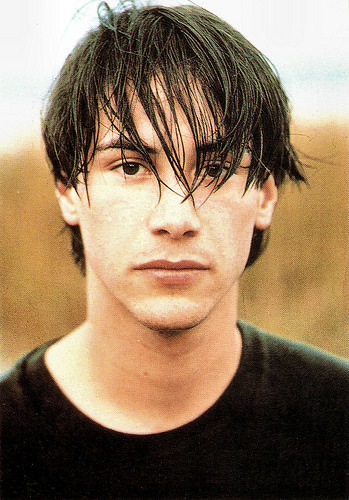
Vintage postcard, no. C 445.
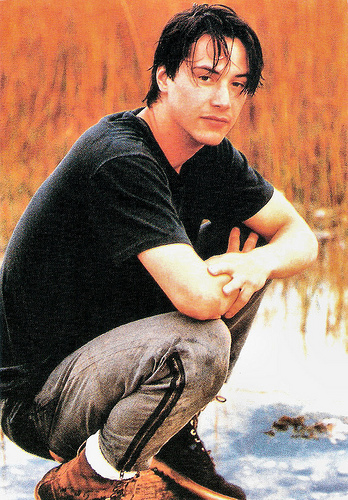
British postcard, no. MM373.
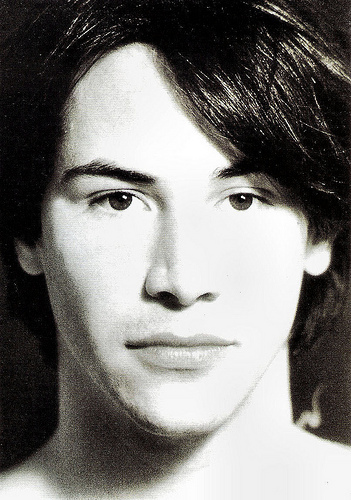
British postcard by Heroes Publishing Ltd., London, no. SPC 3017.
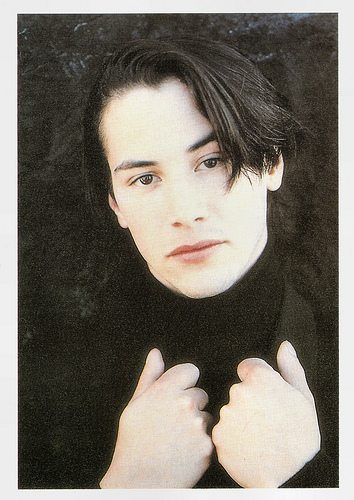
Spanish postcard by Coleccion Estrellas Cinematograficas, Cacitel, no. 73.
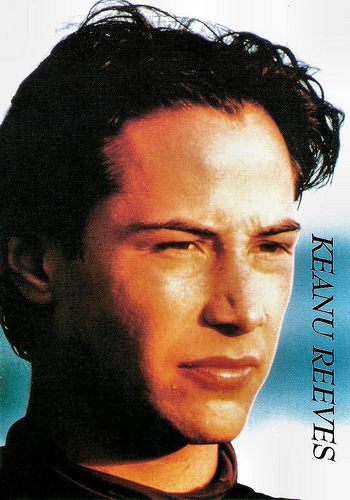
British postcard, no. MM371.
Cool breeze over the mountains
Keanu Charles Reeves was born in 1964, in Beirut, Lebanon. His first name means ‘cool breeze over the mountains’ in Hawaiian. His father, Samuel Nowlin Reeves Jr., was a geologist of Chinese-Hawaiian heritage, and his mother, Patricia Bond (née Taylor), was a British showgirl and later a costume designer for rock stars such as Alice Cooper.
Reeves's mother was working in Beirut when she met his father. Upon his parents’ split in 1966, Keanu moved with his mother and younger sister Kim Reeves to Sydney, to New York and then to Toronto. As a child, he lived with various stepfathers, including stage and film director Paul Aaron.
Keanu developed an ardour for hockey, though he would eventually turn to acting. At 15, he played Mercutio in a stage production of Romeo and Juliet at the Leah Posluns Theatre. Reeves dropped out of high school when he was 17.
His film debut was the Canadian feature One Step Away (Robert Fortier, 1985). After a part in the teen movie Youngblood (Peter Markle, 1986), starring Rob Lowe, he obtained a green card through stepfather Paul Aaron and moved to Los Angeles.
After a few minor roles, he gained attention for his performance in the dark drama River's Edge (Tim Hunter, 1986), which depicted how a murder affected a group of adolescents. Reeves landed a supporting role in the Oscar-nominated period drama Dangerous Liaisons (Stephen Frears, 1988), starring Glenn Close and John Malkovich. Reeves joined the casts of Ron Howard's comedy Parenthood (1989), and Lawrence Kasdan's I Love You to Death (1990).
Unexpectedly successful was the wacky comedy Bill & Ted's Excellent Adventure (Stephen Herek, 1989) which followed two high school students (Reeves and Alex Winter) and their time-travelling high jinks. The success lead to a TV series and a sequel, Bill & Ted's Bogus Journey (Pete Hewitt, 1991). From then on, audiences often confused Reeves's real-life persona with that of his doofy on-screen counterpart.
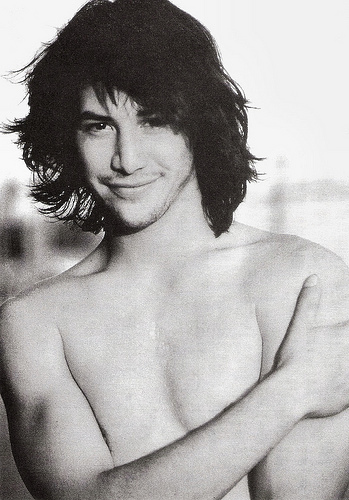
British postcard, no. 1034.
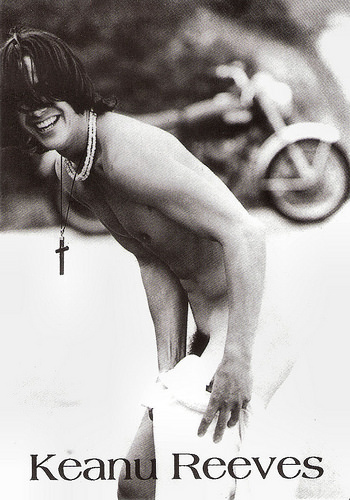
British postcard by Box Office, London, no. BO 007.
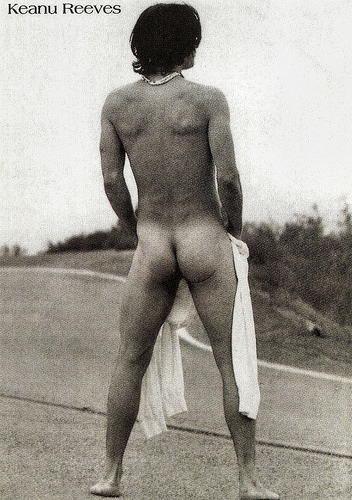
British postcard by Underground, London, no. MM 396.
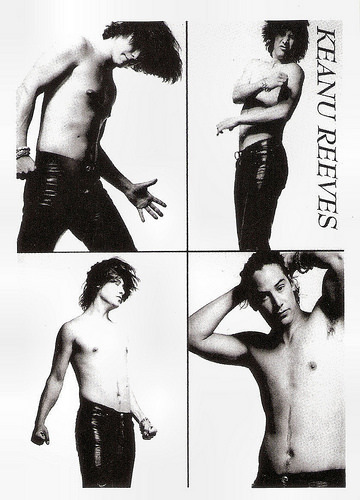
British postcard by Underground, London, no. BO110.
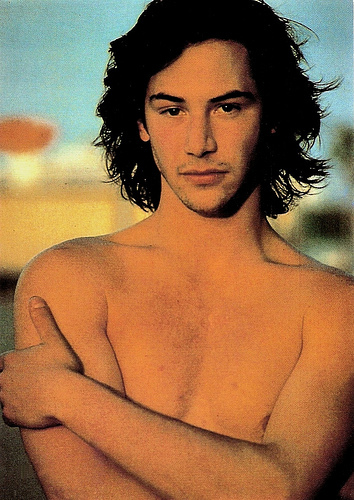
British postcard by Heroes Publishing Ltd., London, no. SPC2621.
Most Desirable Male
In the following years, Keanu Reeves tried to shake the Ted stigma. He developed an eclectic film roster that included high-budget action films like the surf thriller Point Break (Kathryn Bigelow, 1991) for which he won MTV's ‘Most Desirable Male’ award in 1992, but also lower-budget art-house films.
My Own Private Idaho (1991), directed by Gus Van Sant and co-starring River Phoenix, chronicled the lives of two young hustlers living on the streets. In Francis Ford Coppola’s adaptation of Bram Stoker’s Dracula (1992), Reeves embodied the calm resolute lawyer Jonathan Harker who stumbles into the lair of Gary Oldman’s Count Dracula.
In Europe, he played prince Siddharta who becomes the Buddha in Bernardo Bertolucci’s Italian-French-British drama Little Buddha (1993).
His career reached a new high when he starred opposite Sandra Bullock in the hit action film Speed (Jan de Bont, 1994). It was followed by the romantic drama A Walk in the Clouds (Alfonso Arau, 1995) and the supernatural thriller Devil’s Advocate (Taylor Hackford, 1997), co-starring Al Pacino and Charlize Theron.
At the close of the decade, Reeves starred in a Sci-fi film that would become a genre game changer, The Matrix (Andy and Lana Wachowski, 1999). Reeves played the prophetic figure Neo, slated to lead humanity to freedom from an all-consuming simulated world. Known for its innovative fight sequences, avant-garde special effects and gorgeous fashion, The Matrix was an international hit. Two sequels, The Matrix Reloaded (Andy and Lana Wachowski, 1999) and The Matrix Revolutions (Andy and Lana Wachowski, 1999) followed and The Matrix Reloaded was even a bigger financial blockbuster than its predecessor.
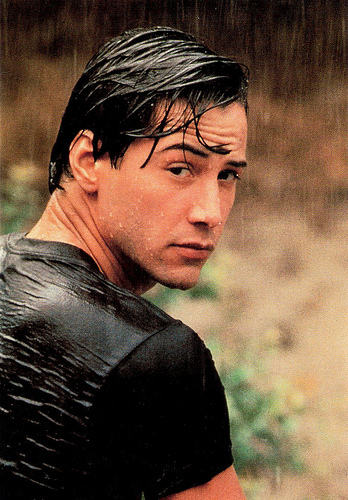
British postcard by Heroes Publishing Ltd., London, no. SPC2581. Photo: publicity still for Point Break (Kathryn Bigelow, 1991).
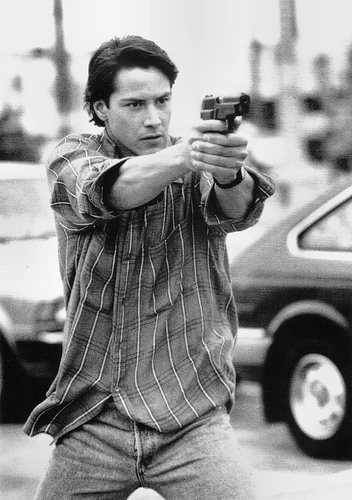
British postcard, no. 1004. Photo: publicity still for Point Break (Kathryn Bigelow, 1991).
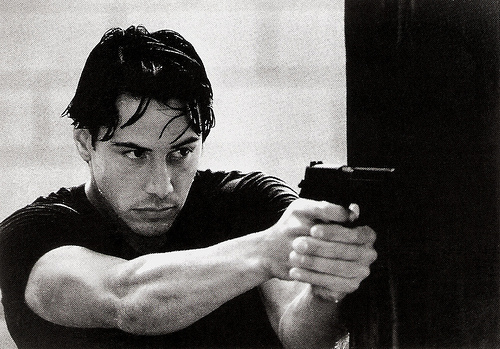
Vintage postcard, no. PP 105. Photo: publicity still for Point Break (Kathryn Bigelow, 1991).
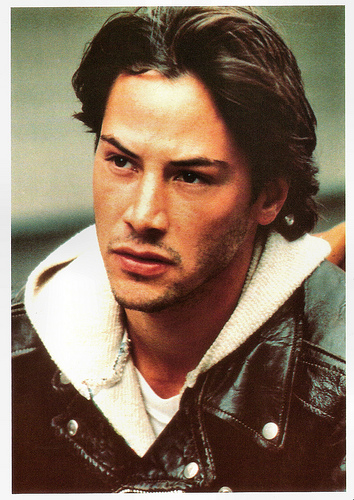
British postcard by Santoro Graphics Ltd., South Yorks, no. C350. Photo: publicity still for My Own Private Idaho (Gus Van Sant, 1991).
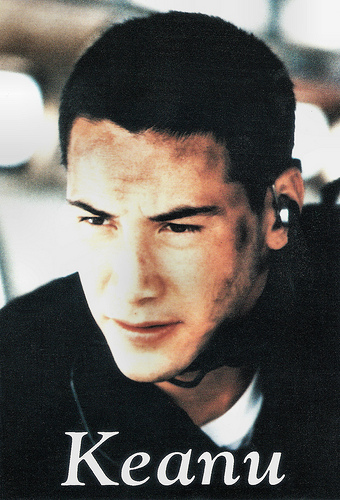
British postcard, no. 2070. Photo: publicity still for Speed (Jan de Bont, 1994).
A major bonafide box office star
Now a major, bonafide box office star, Keanu Reeves continued to work in different genres and both in big-budget as in small independent films. He played an abusive man in the supernatural thriller The Gift (Sam Raimi, 2000), starring Cate Blanchett, a smitten doctor in the romantic comedy Something’s Gotta Give (Nancy Meyers, 2003) opposite Diane Keaton, and a Brit demon hunter in American-German occult detective action film Constantine (Francis Lawrence, 2005).
His appearance in the animated science fiction thriller A Scanner Darkly (Richard Linklater, 2006), based on the novel by Philip K. Dick, received favourable reviews, and The Lake House (Alejandro Agresti, 2006) , his romantic outing with Sandra Bullock, was a success at the box office.
Reeves returned to Sci-fi as alien Klaatu in The Day the Earth Stood Still (Scott Derrickson, 2008), the remake of the 1951 classic. Then he played a supporting part in Rebecca Miller's The Private Life of Pippa Lee (2009), which starred Robin Wright and premiered at the 59th Berlin International Film Festival.
Reeves co-founded a production company, Company Films. The company helped produce Henry's Crime (Malcolm Venville, 2010), in which Reeves also starred. The actor made his directorial debut with the Chinese-American Martial arts film Man of Tai Chi (2013), partly inspired by the life of Reeves' friend, stuntman Tiger Chen. Martial arts–based themes continued in Reeves's next feature, 47 Ronin (Carl Rinsch, 2013), about a real-life group of masterless samurai in 18th-century Japan who avenged the death of their lord. Variety magazine listed 47 Ronin as one of "Hollywood's biggest box office bombs of 2013".
Reeves returned as a retired hitman in the Neo-Noir action thriller John Wick (Chad Stahelski, David Leitch, 2014). The film opened to positive reviews and performed well at the box office. A sequel, titled John Wick: Chapter Two, is currently in production and is scheduled to be released in 2017. This year, he could be seen in the psychological horror film The Neon Demon (Nicolas Winding Refn, 2016) and the romantic horror-thriller Bad Batch (Ana Lily Amirpour, 2016).
Reeves’ artistic aspirations are not limited to film. In the early 1990s, he co-founded the grunge band Dogstar, which released two albums. He later played bass for a band called Becky. Reeves is also a longtime motorcycle enthusiast. After asking designer Gard Hollinger to create a custom-built bike for him, the two went into business together with the formation of Arch Motorcycle Company LLC in 2011.
Reported to be one of the more generous actors in Hollywood, Reeves helped care for his sister during her lengthy battle with leukaemia, and has supported such organisations as Stand Up To Cancer and PETA. In January 2000, Reeves's girlfriend, Jennifer Syme, gave birth eight months into her pregnancy to Ava Archer Syme-Reeves, who was stillborn. The strain put on their relationship by their grief resulted in Reeves and Syme's breakup several weeks later. In 2001, Syme died after a car accident.
Trailer Bill & Ted's Excellent Adventure (1989). Source: Movieclips Trailer Vault (YouTube).
Trailer Point Break (1991). Source: Adam Jackson (YouTube).
Trailer Speed (1994). Source: 4thMealisGood (YouTube).
Trailer Little Buddha (1993). Source: vijay kumar (YouTube).
Trailer John Wick (2014). Source: Movieclips Trailers (YouTube).
Sources: Biography.com, Wikipedia and .

Vintage postcard, no. C 445.

British postcard, no. MM373.

British postcard by Heroes Publishing Ltd., London, no. SPC 3017.

Spanish postcard by Coleccion Estrellas Cinematograficas, Cacitel, no. 73.

British postcard, no. MM371.
Cool breeze over the mountains
Keanu Charles Reeves was born in 1964, in Beirut, Lebanon. His first name means ‘cool breeze over the mountains’ in Hawaiian. His father, Samuel Nowlin Reeves Jr., was a geologist of Chinese-Hawaiian heritage, and his mother, Patricia Bond (née Taylor), was a British showgirl and later a costume designer for rock stars such as Alice Cooper.
Reeves's mother was working in Beirut when she met his father. Upon his parents’ split in 1966, Keanu moved with his mother and younger sister Kim Reeves to Sydney, to New York and then to Toronto. As a child, he lived with various stepfathers, including stage and film director Paul Aaron.
Keanu developed an ardour for hockey, though he would eventually turn to acting. At 15, he played Mercutio in a stage production of Romeo and Juliet at the Leah Posluns Theatre. Reeves dropped out of high school when he was 17.
His film debut was the Canadian feature One Step Away (Robert Fortier, 1985). After a part in the teen movie Youngblood (Peter Markle, 1986), starring Rob Lowe, he obtained a green card through stepfather Paul Aaron and moved to Los Angeles.
After a few minor roles, he gained attention for his performance in the dark drama River's Edge (Tim Hunter, 1986), which depicted how a murder affected a group of adolescents. Reeves landed a supporting role in the Oscar-nominated period drama Dangerous Liaisons (Stephen Frears, 1988), starring Glenn Close and John Malkovich. Reeves joined the casts of Ron Howard's comedy Parenthood (1989), and Lawrence Kasdan's I Love You to Death (1990).
Unexpectedly successful was the wacky comedy Bill & Ted's Excellent Adventure (Stephen Herek, 1989) which followed two high school students (Reeves and Alex Winter) and their time-travelling high jinks. The success lead to a TV series and a sequel, Bill & Ted's Bogus Journey (Pete Hewitt, 1991). From then on, audiences often confused Reeves's real-life persona with that of his doofy on-screen counterpart.

British postcard, no. 1034.

British postcard by Box Office, London, no. BO 007.

British postcard by Underground, London, no. MM 396.

British postcard by Underground, London, no. BO110.

British postcard by Heroes Publishing Ltd., London, no. SPC2621.
Most Desirable Male
In the following years, Keanu Reeves tried to shake the Ted stigma. He developed an eclectic film roster that included high-budget action films like the surf thriller Point Break (Kathryn Bigelow, 1991) for which he won MTV's ‘Most Desirable Male’ award in 1992, but also lower-budget art-house films.
My Own Private Idaho (1991), directed by Gus Van Sant and co-starring River Phoenix, chronicled the lives of two young hustlers living on the streets. In Francis Ford Coppola’s adaptation of Bram Stoker’s Dracula (1992), Reeves embodied the calm resolute lawyer Jonathan Harker who stumbles into the lair of Gary Oldman’s Count Dracula.
In Europe, he played prince Siddharta who becomes the Buddha in Bernardo Bertolucci’s Italian-French-British drama Little Buddha (1993).
His career reached a new high when he starred opposite Sandra Bullock in the hit action film Speed (Jan de Bont, 1994). It was followed by the romantic drama A Walk in the Clouds (Alfonso Arau, 1995) and the supernatural thriller Devil’s Advocate (Taylor Hackford, 1997), co-starring Al Pacino and Charlize Theron.
At the close of the decade, Reeves starred in a Sci-fi film that would become a genre game changer, The Matrix (Andy and Lana Wachowski, 1999). Reeves played the prophetic figure Neo, slated to lead humanity to freedom from an all-consuming simulated world. Known for its innovative fight sequences, avant-garde special effects and gorgeous fashion, The Matrix was an international hit. Two sequels, The Matrix Reloaded (Andy and Lana Wachowski, 1999) and The Matrix Revolutions (Andy and Lana Wachowski, 1999) followed and The Matrix Reloaded was even a bigger financial blockbuster than its predecessor.

British postcard by Heroes Publishing Ltd., London, no. SPC2581. Photo: publicity still for Point Break (Kathryn Bigelow, 1991).

British postcard, no. 1004. Photo: publicity still for Point Break (Kathryn Bigelow, 1991).

Vintage postcard, no. PP 105. Photo: publicity still for Point Break (Kathryn Bigelow, 1991).

British postcard by Santoro Graphics Ltd., South Yorks, no. C350. Photo: publicity still for My Own Private Idaho (Gus Van Sant, 1991).

British postcard, no. 2070. Photo: publicity still for Speed (Jan de Bont, 1994).
A major bonafide box office star
Now a major, bonafide box office star, Keanu Reeves continued to work in different genres and both in big-budget as in small independent films. He played an abusive man in the supernatural thriller The Gift (Sam Raimi, 2000), starring Cate Blanchett, a smitten doctor in the romantic comedy Something’s Gotta Give (Nancy Meyers, 2003) opposite Diane Keaton, and a Brit demon hunter in American-German occult detective action film Constantine (Francis Lawrence, 2005).
His appearance in the animated science fiction thriller A Scanner Darkly (Richard Linklater, 2006), based on the novel by Philip K. Dick, received favourable reviews, and The Lake House (Alejandro Agresti, 2006) , his romantic outing with Sandra Bullock, was a success at the box office.
Reeves returned to Sci-fi as alien Klaatu in The Day the Earth Stood Still (Scott Derrickson, 2008), the remake of the 1951 classic. Then he played a supporting part in Rebecca Miller's The Private Life of Pippa Lee (2009), which starred Robin Wright and premiered at the 59th Berlin International Film Festival.
Reeves co-founded a production company, Company Films. The company helped produce Henry's Crime (Malcolm Venville, 2010), in which Reeves also starred. The actor made his directorial debut with the Chinese-American Martial arts film Man of Tai Chi (2013), partly inspired by the life of Reeves' friend, stuntman Tiger Chen. Martial arts–based themes continued in Reeves's next feature, 47 Ronin (Carl Rinsch, 2013), about a real-life group of masterless samurai in 18th-century Japan who avenged the death of their lord. Variety magazine listed 47 Ronin as one of "Hollywood's biggest box office bombs of 2013".
Reeves returned as a retired hitman in the Neo-Noir action thriller John Wick (Chad Stahelski, David Leitch, 2014). The film opened to positive reviews and performed well at the box office. A sequel, titled John Wick: Chapter Two, is currently in production and is scheduled to be released in 2017. This year, he could be seen in the psychological horror film The Neon Demon (Nicolas Winding Refn, 2016) and the romantic horror-thriller Bad Batch (Ana Lily Amirpour, 2016).
Reeves’ artistic aspirations are not limited to film. In the early 1990s, he co-founded the grunge band Dogstar, which released two albums. He later played bass for a band called Becky. Reeves is also a longtime motorcycle enthusiast. After asking designer Gard Hollinger to create a custom-built bike for him, the two went into business together with the formation of Arch Motorcycle Company LLC in 2011.
Reported to be one of the more generous actors in Hollywood, Reeves helped care for his sister during her lengthy battle with leukaemia, and has supported such organisations as Stand Up To Cancer and PETA. In January 2000, Reeves's girlfriend, Jennifer Syme, gave birth eight months into her pregnancy to Ava Archer Syme-Reeves, who was stillborn. The strain put on their relationship by their grief resulted in Reeves and Syme's breakup several weeks later. In 2001, Syme died after a car accident.
Trailer Bill & Ted's Excellent Adventure (1989). Source: Movieclips Trailer Vault (YouTube).
Trailer Point Break (1991). Source: Adam Jackson (YouTube).
Trailer Speed (1994). Source: 4thMealisGood (YouTube).
Trailer Little Buddha (1993). Source: vijay kumar (YouTube).
Trailer John Wick (2014). Source: Movieclips Trailers (YouTube).
Sources: Biography.com, Wikipedia and .
Published on December 16, 2016 22:00
Paul van Yperen's Blog
- Paul van Yperen's profile
- 13 followers
Paul van Yperen isn't a Goodreads Author
(yet),
but they
do have a blog,
so here are some recent posts imported from
their feed.



